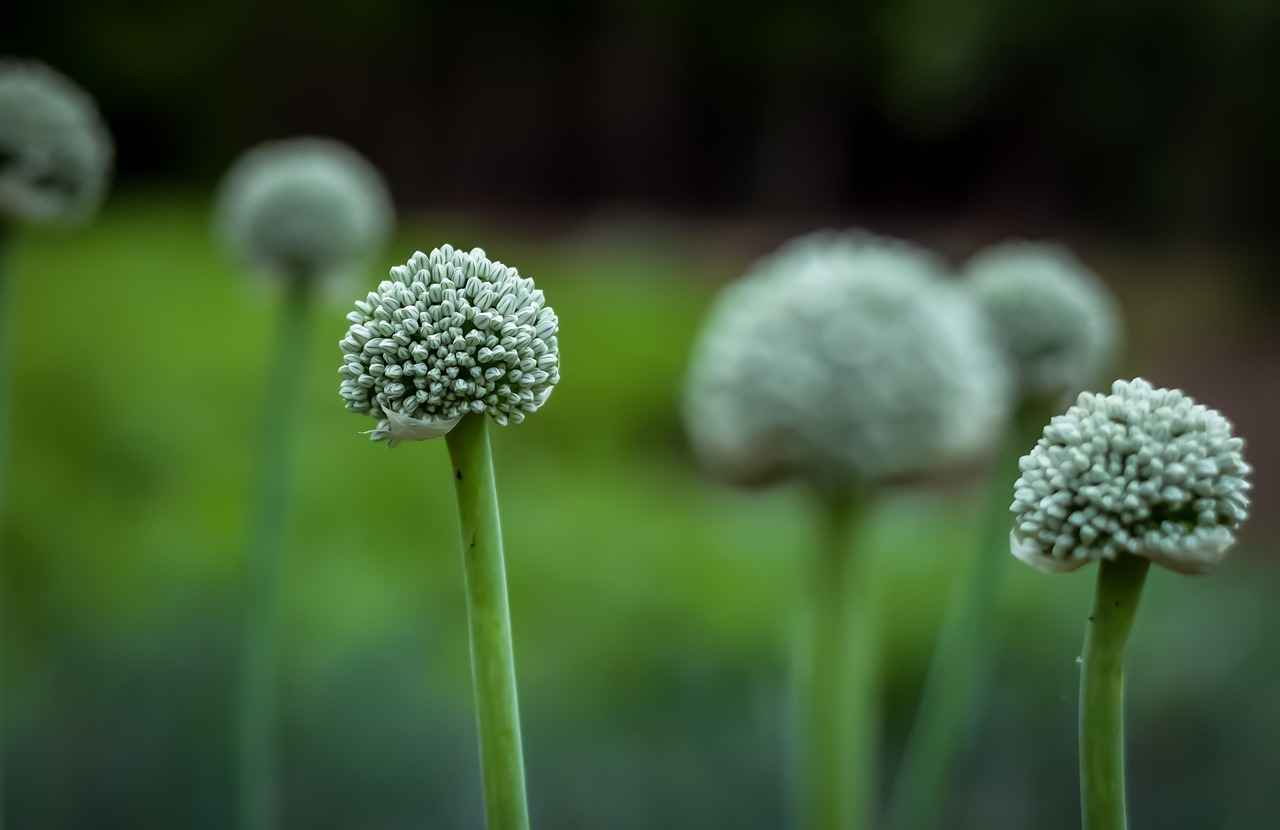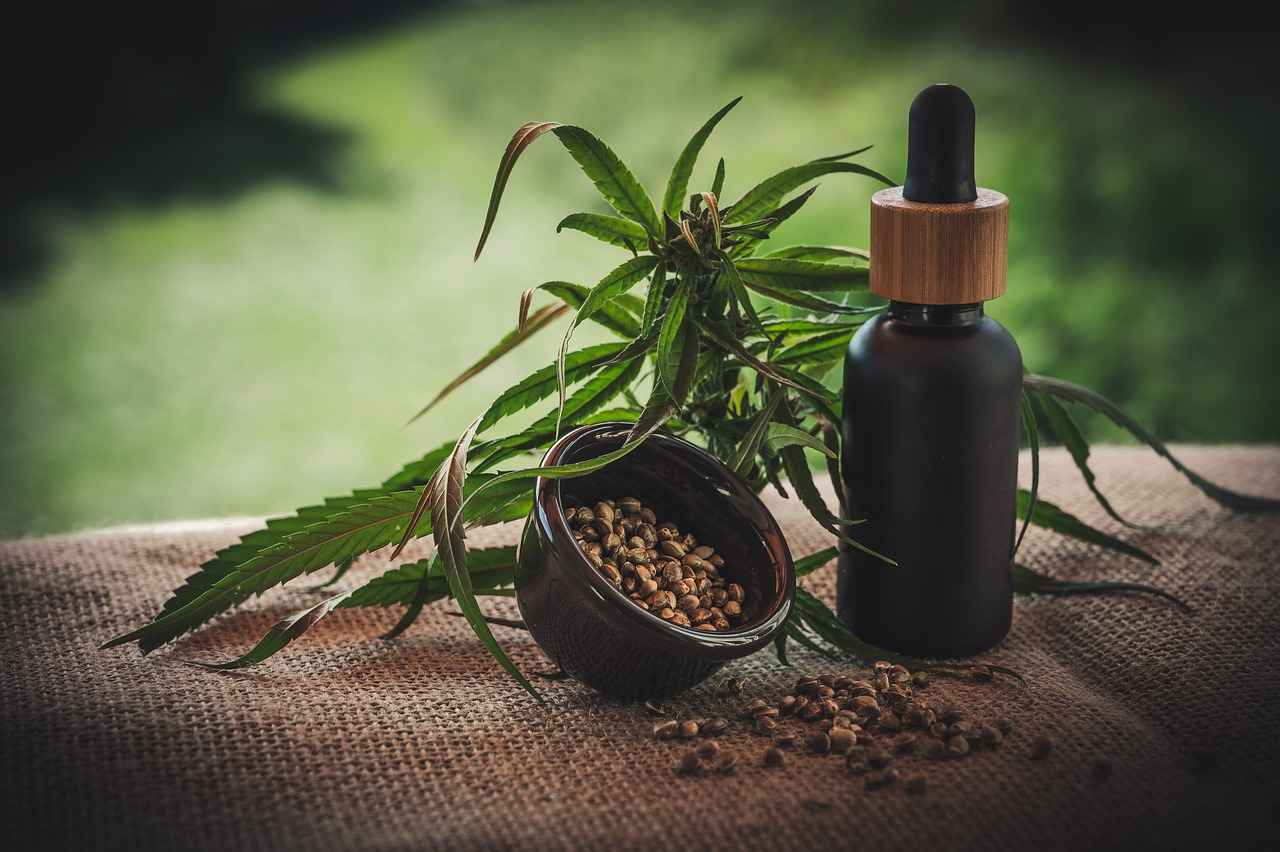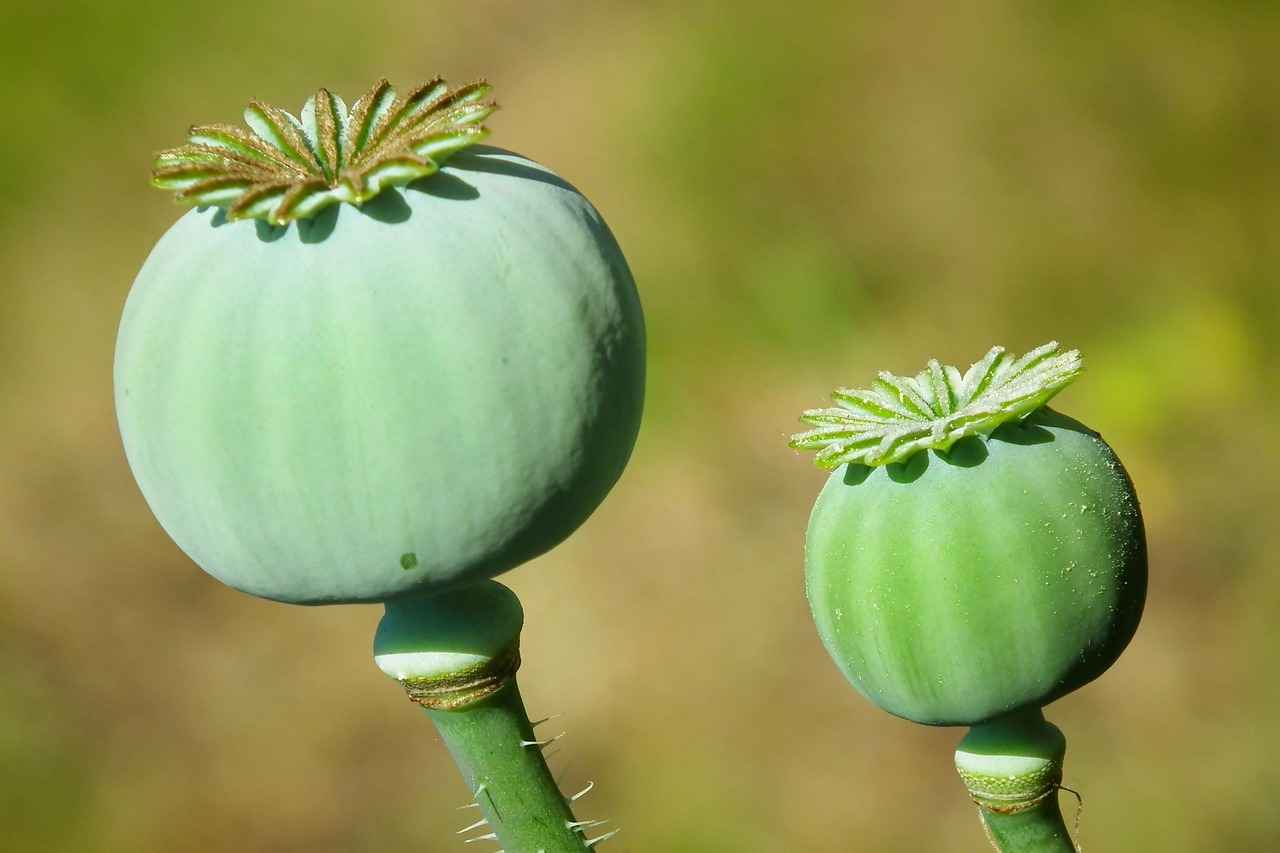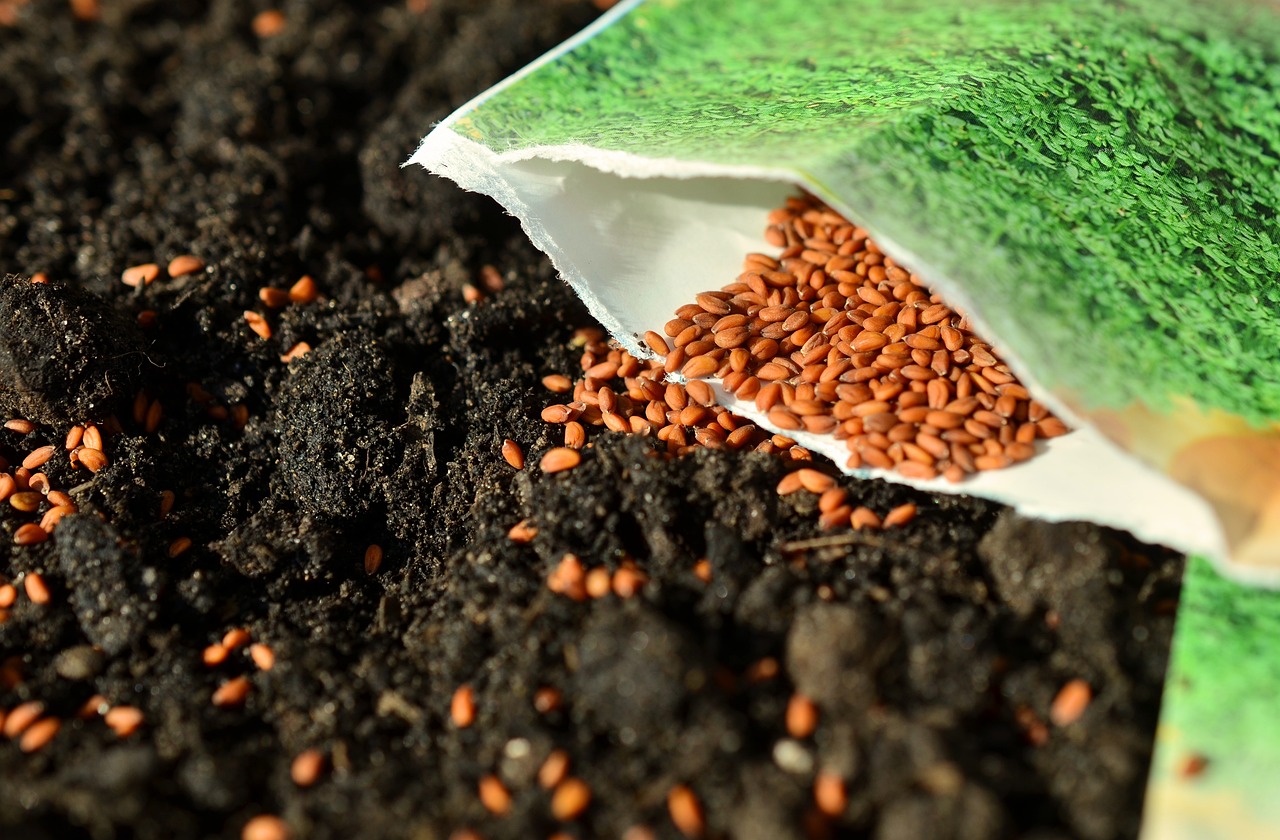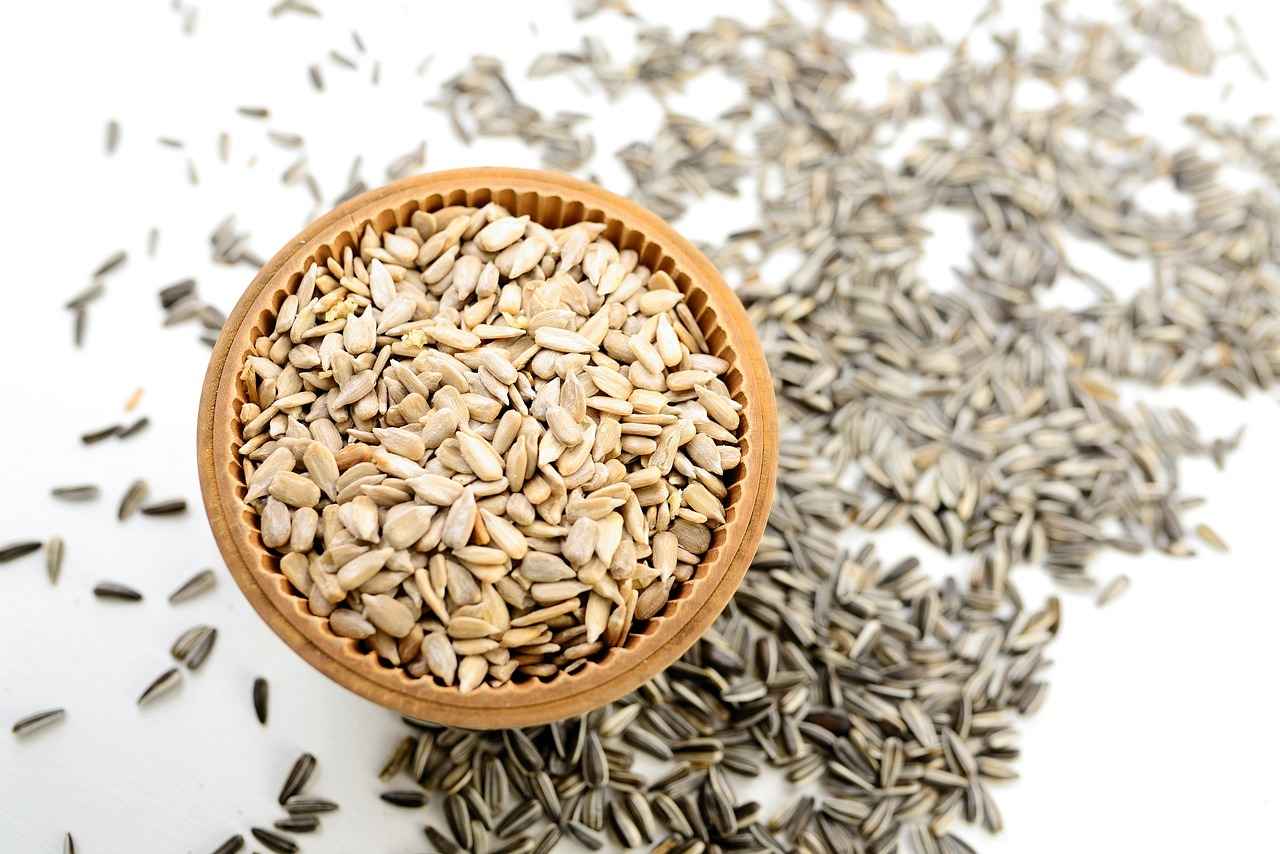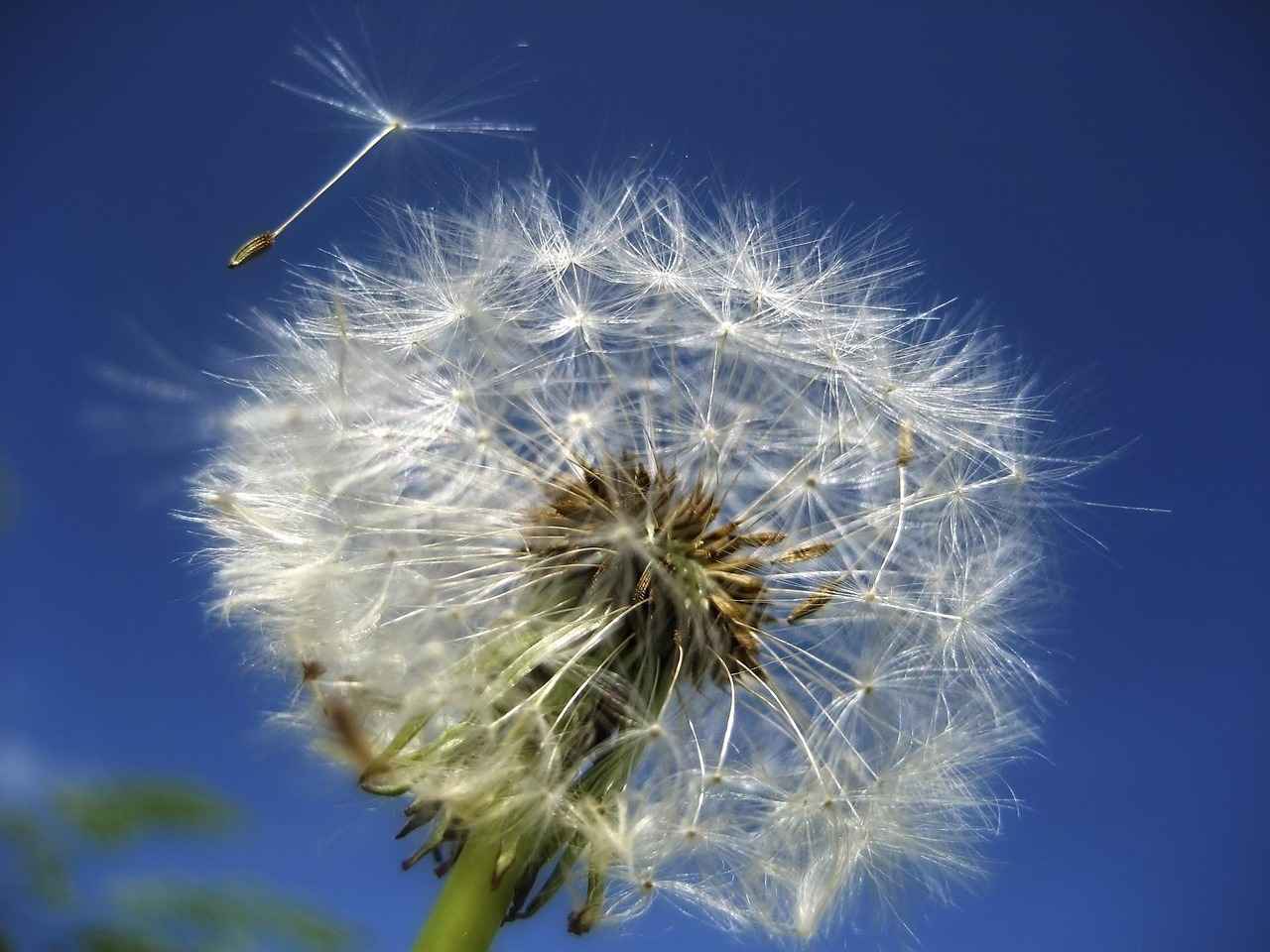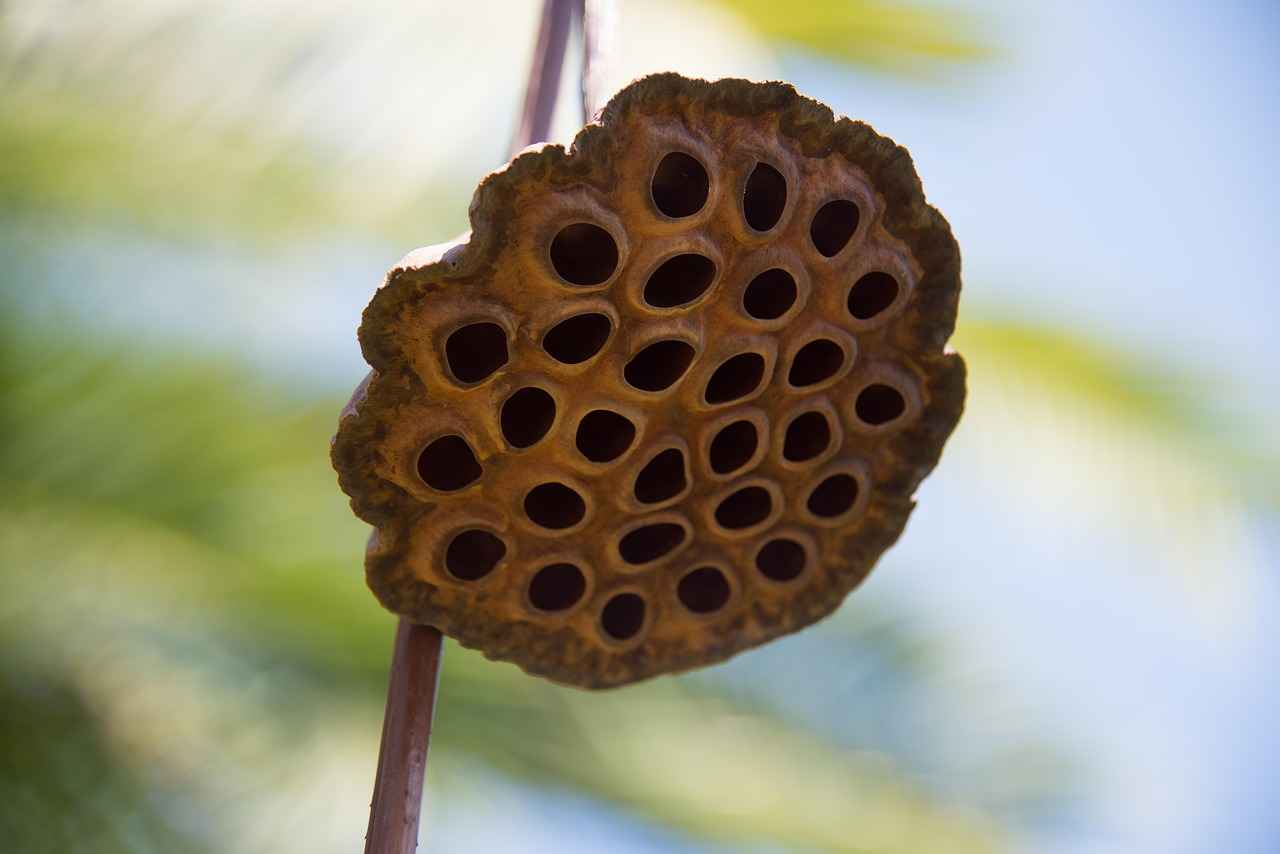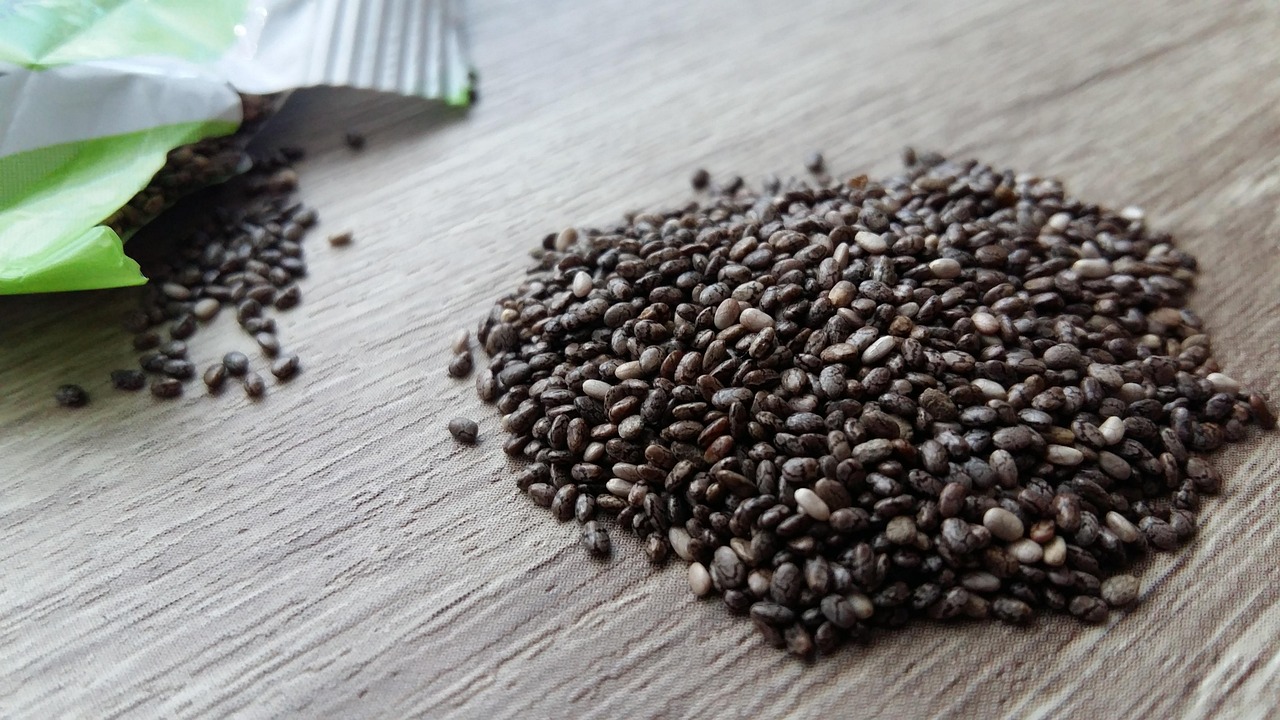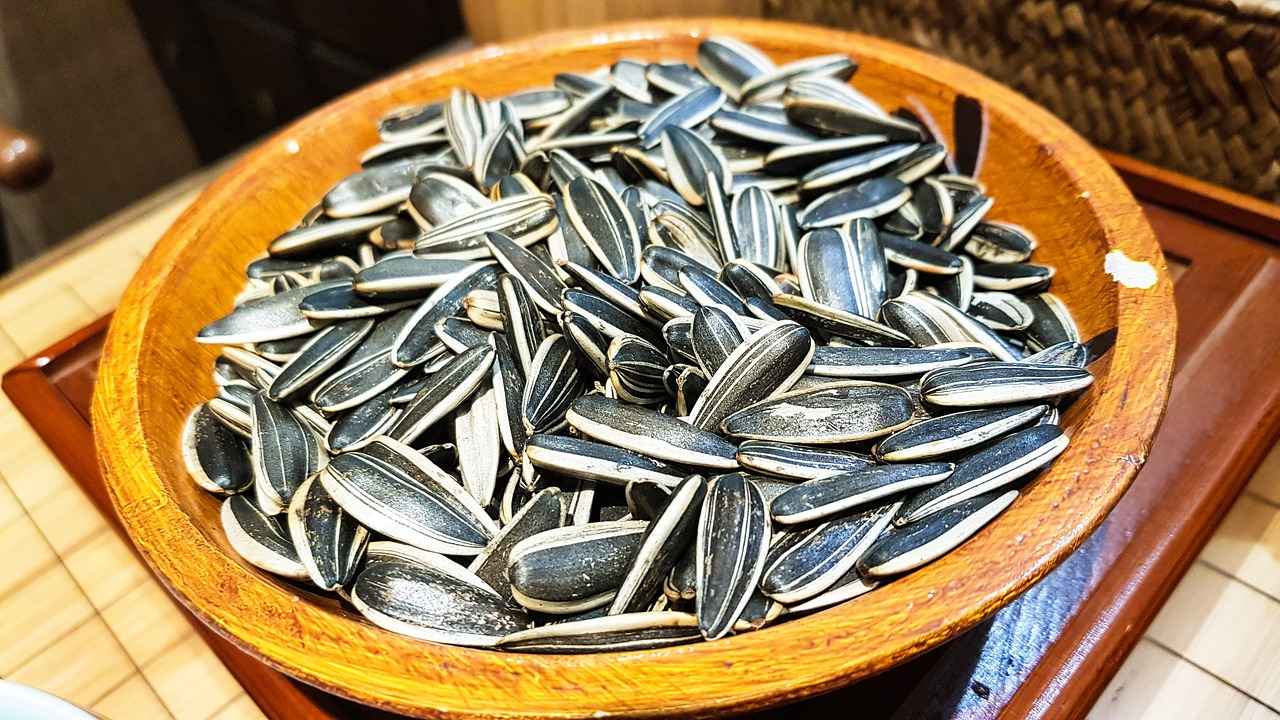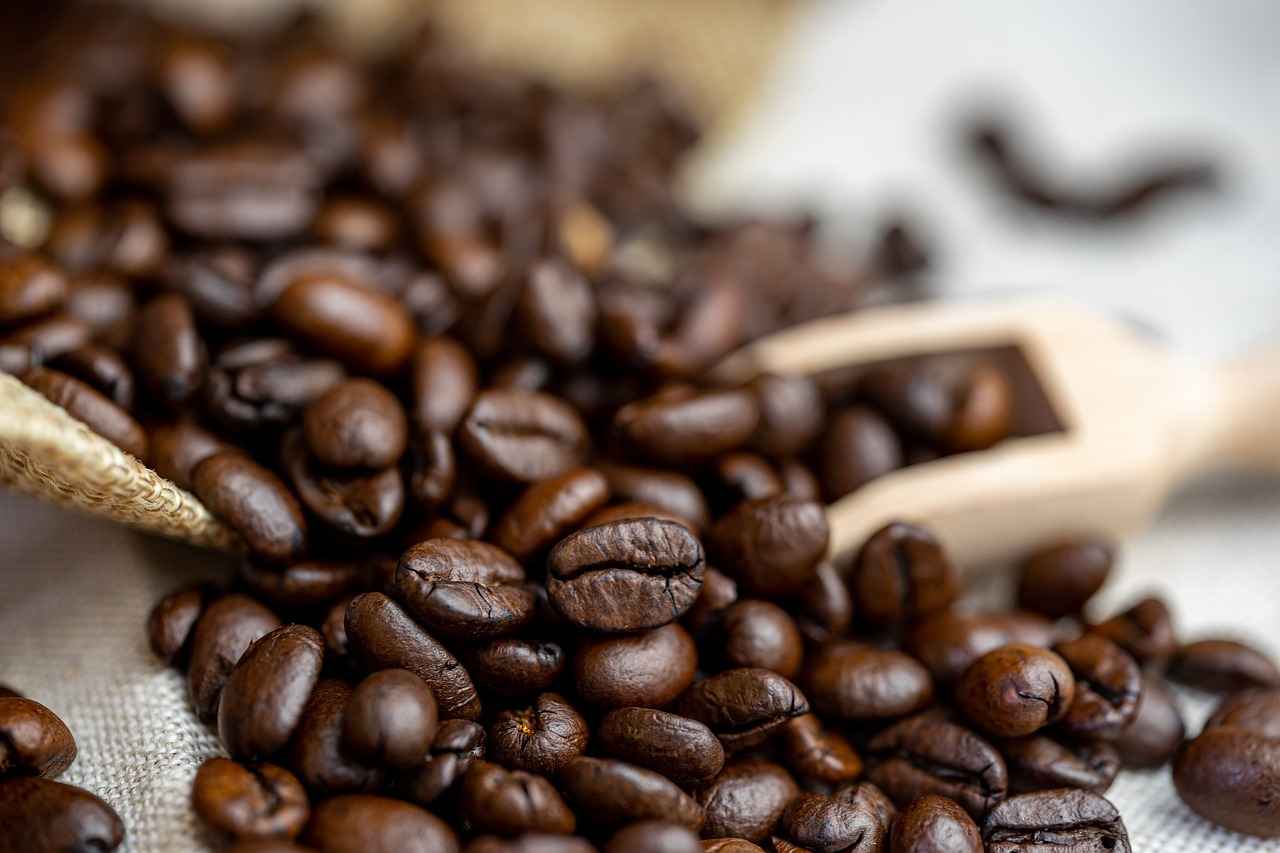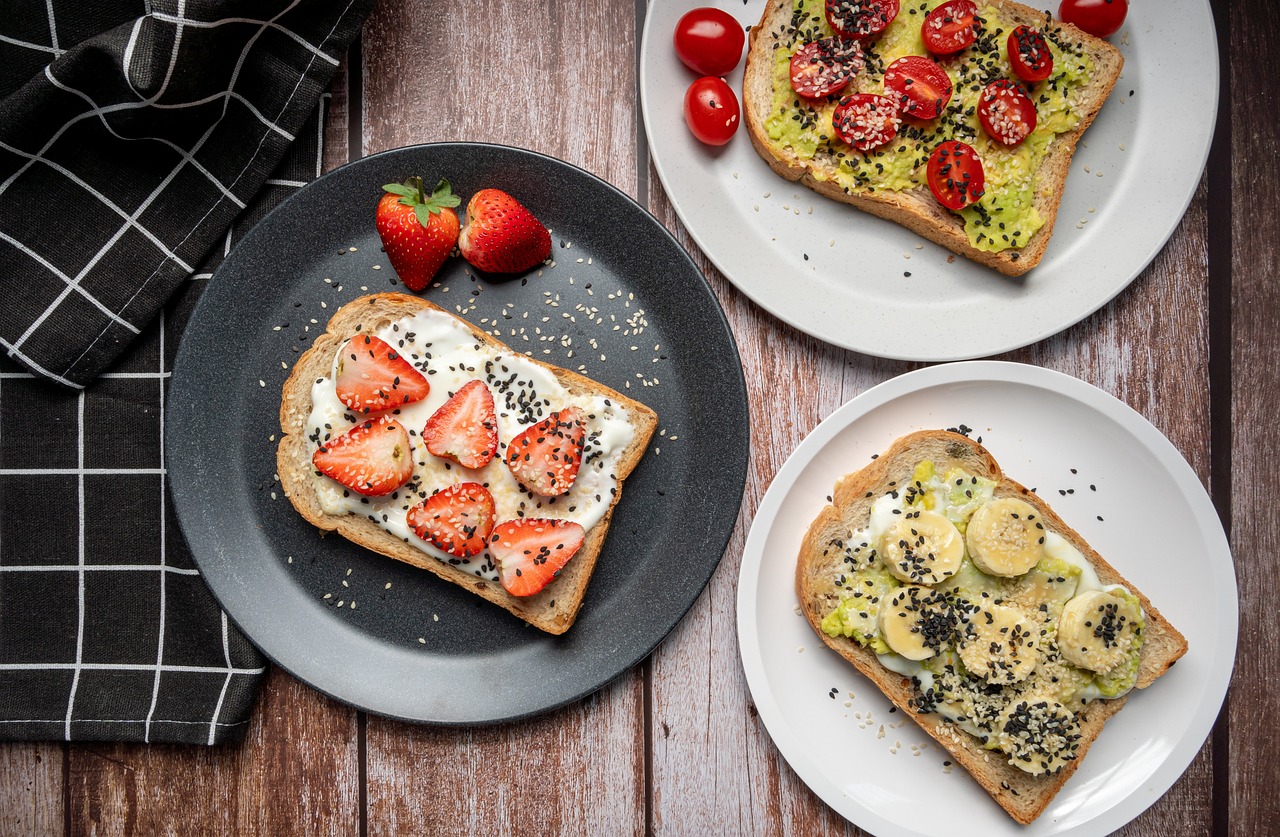Chia seeds have emerged as a remarkable superfood, capturing the attention of health enthusiasts and nutritionists alike. These tiny seeds are not only versatile but also boast an impressive nutritional profile, making them a staple in many diets. This article explores the essence of chia seeds, their myriad benefits, and practical uses in everyday meals.
Chia seeds are small, black or white seeds derived from the Salvia hispanica plant, which is native to Central America. Historically, these seeds were a vital food source for ancient civilizations such as the Aztecs and Mayans. Today, they are celebrated for their health benefits and are easily accessible in health food stores and supermarkets.
Chia seeds are nutrient-dense and provide a wealth of health-promoting compounds:
- Omega-3 Fatty Acids: Essential for brain health and reducing inflammation.
- Fiber: Supports digestive health and aids in weight management.
- Protein: A plant-based source of protein that helps in muscle repair.
- Vitamins and Minerals: Includes calcium, magnesium, phosphorus, and antioxidants.
Incorporating chia seeds into your diet can yield numerous health benefits:
The high fiber content in chia seeds promotes a feeling of fullness, which can help control appetite and reduce calorie intake. This makes them an excellent choice for those looking to manage their weight effectively.
Chia seeds are rich in calcium, phosphorus, and magnesium, essential minerals for maintaining strong bones. Regular consumption can contribute to improved bone density.
The omega-3 fatty acids found in chia seeds are linked to improved cardiovascular health. They help lower cholesterol levels and reduce the risk of heart disease.
Chia seeds are incredibly versatile and can be easily incorporated into various meals:
One popular method is to make chia seed pudding. Simply mix chia seeds with your choice of milk or a dairy alternative and let them soak overnight. This creates a delicious, creamy dessert that can be flavored with fruits or sweeteners.
Another easy way to enjoy chia seeds is by sprinkling them on salads or blending them into smoothies. Their mild flavor and crunchy texture enhance the nutritional value of your meals without overwhelming other flavors.
While chia seeds are generally safe for most people, it is essential to be aware of potential side effects:
Some individuals may experience bloating or gas, especially if they consume chia seeds without adequate hydration. It’s advisable to increase your intake gradually and drink plenty of water.
Though rare, allergic reactions can occur. If you notice any unusual symptoms after consuming chia seeds, consult a healthcare professional.
Chia seeds are widely available in grocery stores, health food shops, and online retailers. When purchasing, consider looking for organic and non-GMO options to ensure quality.
To maintain freshness and nutritional value, store chia seeds in a cool, dry place in an airtight container. Proper storage can extend their shelf life significantly.
Yes, chia seeds can be a fantastic addition to baking recipes. They can serve as a vegan egg substitute by mixing them with water to create a gel-like consistency, making them suitable for various baked goods.
In summary, chia seeds are a powerhouse of nutrition that can enhance your health when incorporated into your diet. With their numerous benefits and versatile uses, they are definitely worth considering in your daily meals.
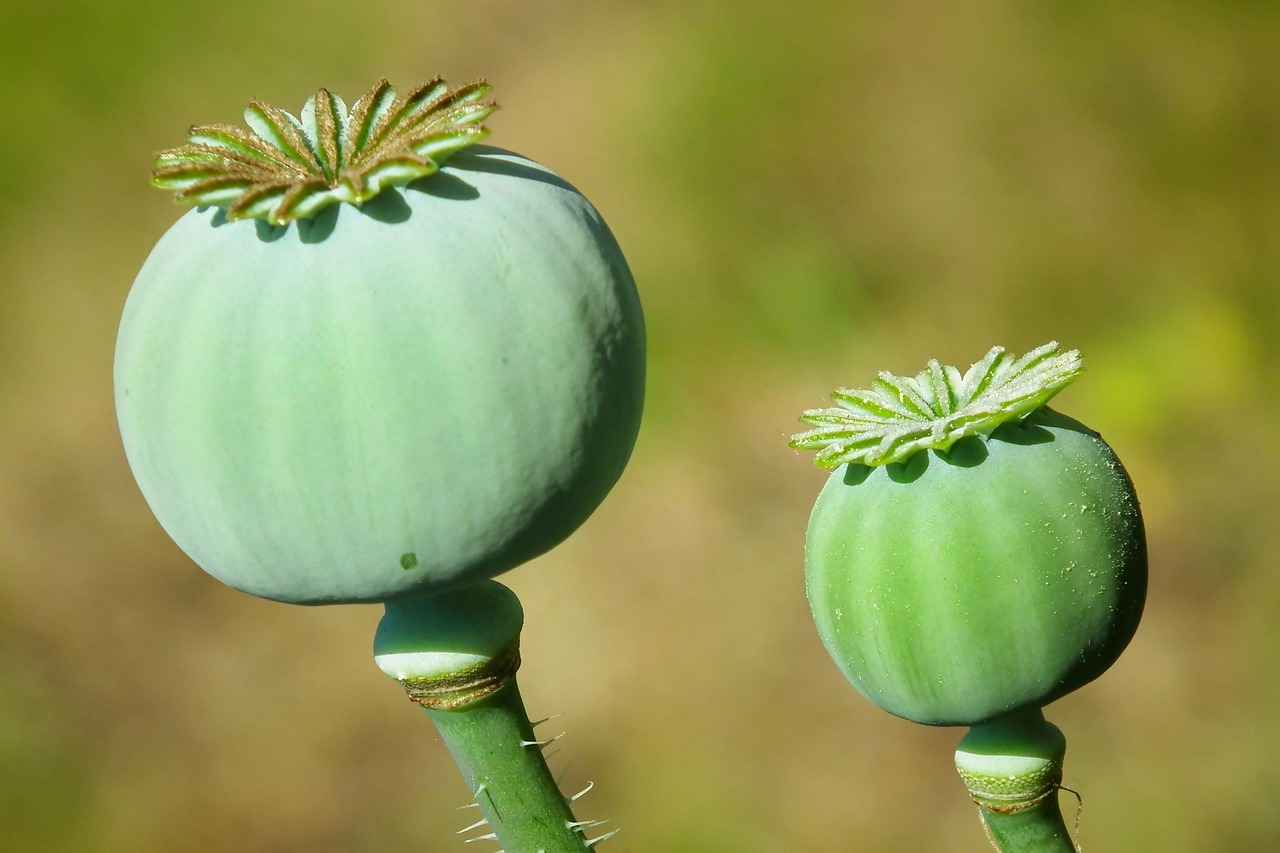
What Are Chia Seeds?
Chia seeds have emerged as a popular choice among health enthusiasts and nutritionists alike, often hailed as a superfood. These tiny seeds, which originate from the Salvia hispanica plant, are native to regions of Mexico and Guatemala. For centuries, they have been a staple in various diets, prized for their impressive health benefits and versatility.
Chia seeds are small, oval-shaped seeds that are typically black or white. They are known for their ability to absorb water, swelling up to ten times their size when soaked. This unique property not only enhances their texture but also makes them a popular ingredient in various recipes. Chia seeds are rich in nutrients, making them an excellent addition to a balanced diet.
Chia seeds are a powerhouse of essential nutrients, including:
- Omega-3 Fatty Acids: Vital for heart and brain health.
- Dietary Fiber: Supports digestive health and aids in weight management.
- Protein: Important for muscle repair and overall health.
- Vitamins and Minerals: Contains calcium, magnesium, and phosphorus, which are crucial for bone health.
The term superfood often refers to foods that are exceptionally high in nutrients and beneficial compounds. Chia seeds are packed with antioxidants, which help combat oxidative stress in the body. Their high fiber content not only promotes digestive health but also helps regulate blood sugar levels, making them an ideal choice for those managing diabetes.
Incorporating chia seeds into your daily meals is simple and versatile. Here are some popular methods:
- Chia Pudding: Combine chia seeds with your choice of milk or plant-based alternatives, let it sit overnight, and enjoy a nutritious breakfast.
- Smoothies: Add a tablespoon of chia seeds to your smoothie for an extra nutrient boost.
- Salads: Sprinkle chia seeds over salads for added crunch and nutrition.
- Baking: Use chia seeds in muffins or bread for enhanced texture and health benefits.
While chia seeds are generally safe for most people, some may experience mild digestive issues, particularly if consumed in large quantities without adequate hydration. It’s crucial to drink plenty of water when incorporating chia seeds into your diet. Additionally, those with allergies to similar seeds should exercise caution.
Chia seeds are widely available in grocery stores, health food stores, and online. When purchasing, look for organic and non-GMO labels to ensure quality. Checking for freshness and proper packaging can also help you choose the best product.
To maintain the freshness and nutritional value of chia seeds, store them in a cool, dry place in an airtight container. Proper storage can extend their shelf life, allowing you to enjoy their benefits for months.
In summary, chia seeds are a versatile and nutrient-dense food that can easily be incorporated into your diet. Their health benefits, combined with their ease of use in various recipes, make them a valuable addition to any health-conscious individual’s pantry.
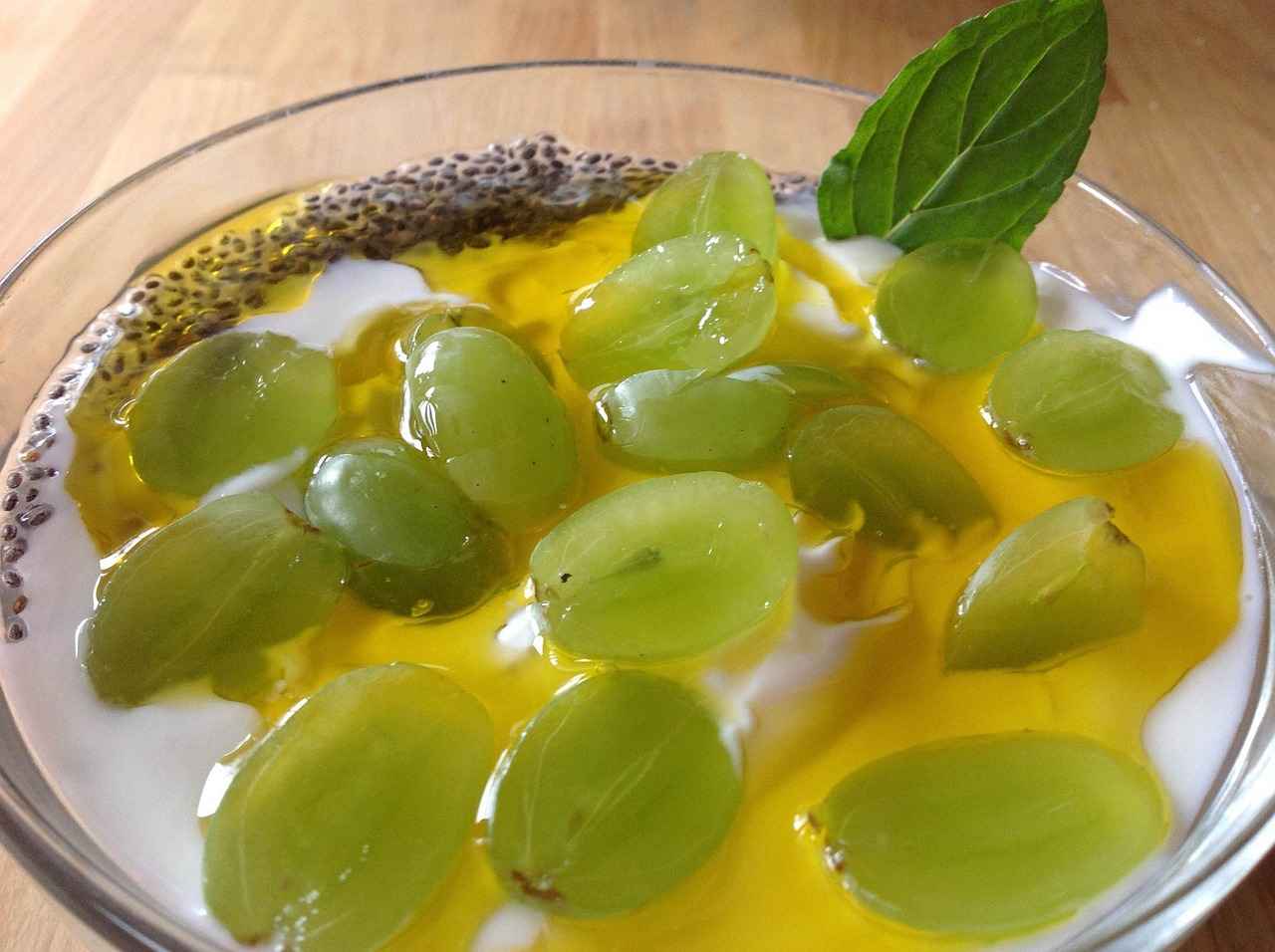
What Nutrients Are Found in Chia Seeds?
Chia seeds are often hailed as a superfood due to their impressive nutritional profile. Packed with a variety of essential nutrients, these tiny seeds have garnered attention for their health benefits and versatility in the kitchen. In this section, we will explore the key nutrients found in chia seeds and their significance for overall health.
Chia seeds are a powerhouse of nutrition, offering a wide array of beneficial components. Here are some of the most notable nutrients:
- Omega-3 Fatty Acids: Chia seeds are one of the richest plant sources of omega-3 fatty acids, particularly alpha-linolenic acid (ALA). These healthy fats are essential for heart and brain health.
- Dietary Fiber: With approximately 34 grams of fiber per 100 grams, chia seeds are an excellent source of dietary fiber, promoting digestive health and aiding in weight management.
- Protein: Chia seeds contain a complete protein profile, providing all nine essential amino acids. This makes them a great option for vegetarians and vegans.
- Vitamins and Minerals: They are rich in various vitamins and minerals, including calcium, magnesium, phosphorus, and B vitamins, all of which play crucial roles in bodily functions.
Omega-3 fatty acids are vital for maintaining optimal health. They are known to:
- Support Heart Health: Omega-3s help lower cholesterol levels and reduce the risk of heart disease.
- Enhance Brain Function: These fats are crucial for brain health, improving cognitive function and reducing the risk of neurodegenerative diseases.
- Reduce Inflammation: Omega-3s are known for their anti-inflammatory properties, which can help alleviate symptoms of various chronic conditions.
The high fiber content in chia seeds offers several health benefits:
- Improved Digestion: Fiber aids in digestion by promoting regular bowel movements and preventing constipation.
- Weight Management: Foods high in fiber can help you feel fuller for longer, reducing overall calorie intake and aiding weight loss efforts.
- Blood Sugar Control: Fiber helps regulate blood sugar levels, making chia seeds a good option for those with diabetes.
Chia seeds are an excellent source of protein, which is essential for:
- Muscle Repair and Growth: Protein is vital for repairing tissues and building muscle mass, especially important for athletes and active individuals.
- Hormone Production: Proteins are necessary for the synthesis of hormones that regulate various bodily functions.
- Immune Function: Adequate protein intake supports a healthy immune system, helping the body fight off infections.
Chia seeds are loaded with essential vitamins and minerals:
- Calcium: Important for bone health, chia seeds provide a plant-based source of calcium.
- Magnesium: This mineral plays a key role in over 300 enzymatic reactions in the body, including energy production and muscle function.
- Phosphorus: Essential for maintaining healthy bones and teeth, phosphorus also supports energy production.
In summary, chia seeds are a nutrient-dense food that can easily be incorporated into your diet. Their combination of omega-3 fatty acids, fiber, protein, and essential vitamins and minerals makes them a valuable addition to a healthy eating plan. Whether sprinkled on salads, blended into smoothies, or used in baking, chia seeds offer a simple way to enhance your nutrition.
Omega-3 Fatty Acids
Omega-3 fatty acids are essential fats that play a pivotal role in maintaining overall health. These fats are not produced by the body, making it crucial to obtain them through diet. Among various sources, chia seeds stand out as one of the richest plant-based options, offering a plethora of health benefits.
Omega-3 fatty acids are vital for numerous bodily functions. They are primarily known for their role in promoting heart health and supporting brain function. These essential fats contribute to the structure of cell membranes, influencing how cells communicate and function.
- Reducing Inflammation: Omega-3s help lower inflammation in the body, which is a significant factor in heart disease.
- Lowering Blood Pressure: Regular intake of omega-3 fatty acids can help reduce blood pressure levels, contributing to better cardiovascular health.
- Improving Cholesterol Levels: Omega-3s can increase levels of high-density lipoprotein (HDL) cholesterol, often referred to as “good” cholesterol.
Research indicates that omega-3 fatty acids are crucial for cognitive function and mental health. They are integral to the structure of brain cells and are involved in neurotransmission. Studies suggest that adequate omega-3 intake may:
- Enhance Memory: Omega-3s have been linked to improved memory and learning capabilities.
- Reduce Depression and Anxiety: Some studies show that omega-3 supplementation can help alleviate symptoms of depression and anxiety.
Incorporating omega-3 fatty acids into your diet is easier than you might think. Here are some practical ways to do so:
1. Add chia seeds to smoothies for a nutritious boost.2. Use chia seeds as a topping for yogurt or oatmeal.3. Include them in baked goods like muffins or breads.
While omega-3 fatty acids are generally safe for most people, excessive intake can lead to some side effects. These may include:
- Digestive Issues: Some individuals may experience bloating or gas when consuming large amounts of chia seeds.
- Blood Thinning: High doses of omega-3s can thin the blood, which may be a concern for individuals on blood-thinning medications.
The recommended daily intake of omega-3 fatty acids varies by age and health status. However, a common guideline suggests:
- Adults: Aim for at least 250-500 mg of combined EPA and DHA daily.
- Pregnant Women: Should aim for higher amounts to support fetal development.
Incorporating omega-3 fatty acids into your diet through sources like chia seeds can lead to significant health benefits. By understanding their importance and how to include them in your meals, you can take proactive steps towards enhancing your overall health.
Health Benefits of Omega-3s
Omega-3 fatty acids are essential fats that our body cannot produce on its own, making it crucial to obtain them through our diet. These fats are known for their numerous health benefits, which range from improving heart health to enhancing brain function. In this section, we will explore the various and how incorporating sources like chia seeds into your diet can significantly contribute to your overall well-being.
Omega-3 fatty acids are a type of polyunsaturated fat that includes three main types: ALA (alpha-linolenic acid), EPA (eicosapentaenoic acid), and DHA (docosahexaenoic acid). ALA is primarily found in plant sources like chia seeds, while EPA and DHA are mainly found in fish and algae. Understanding these types can help you make informed dietary choices to reap their benefits.
Numerous studies have shown that omega-3 fatty acids play a vital role in heart health. They help reduce triglycerides, lower blood pressure, and decrease the risk of heart disease. Regular consumption of omega-3s can also improve cholesterol levels, leading to a healthier cardiovascular system.
- Reduces Inflammation: Omega-3s are known for their anti-inflammatory properties, which can help reduce the risk of chronic diseases.
- Supports Heart Rhythm: They can help maintain a regular heartbeat, reducing the risk of arrhythmias.
Chronic diseases such as diabetes, obesity, and certain cancers can be influenced by the levels of omega-3 fatty acids in the body. Research indicates that a diet rich in omega-3s may lower the risk of developing these conditions.
- Type 2 Diabetes: Omega-3s may improve insulin sensitivity and reduce inflammation, helping to manage blood sugar levels.
- Cancer Prevention: Some studies suggest that omega-3s can help inhibit the growth of cancer cells, particularly in breast and prostate cancers.
Omega-3 fatty acids, particularly DHA, are crucial for brain health. They contribute to the structure of brain cells and are essential for cognitive functions such as memory and learning.
- Improves Memory: Regular intake of omega-3s has been linked to improved memory and cognitive performance.
- Reduces Risk of Dementia: Some studies suggest that higher omega-3 levels may be associated with a reduced risk of Alzheimer’s disease.
Incorporating omega-3 fatty acids into your diet is easier than you might think. One of the best plant-based sources is chia seeds. These tiny seeds are packed with ALA and can be easily added to various meals.
- Smoothies: Blend chia seeds into your morning smoothie for a nutritious boost.
- Salads: Sprinkle them on salads or mix them into dressings for added crunch.
- Baking: Use chia seeds in baking recipes as a healthy substitute.
In conclusion, omega-3 fatty acids are a powerhouse of health benefits that can improve cardiovascular health, reduce the risk of chronic diseases, and enhance cognitive function. By incorporating sources like chia seeds into your diet, you can enjoy these benefits while adding nutritious value to your meals.
How to Incorporate Omega-3s into Your Diet
Incorporating omega-3 fatty acids into your diet is essential for maintaining optimal health. These vital nutrients are known for their numerous benefits, including supporting heart health, enhancing brain function, and reducing inflammation. One of the simplest and most effective ways to boost your omega-3 intake is by adding chia seeds to your meals. Below, we explore various methods to easily integrate these tiny seeds into your daily diet.
1. Adding Chia Seeds to Smoothies
Smoothies are a popular choice for breakfast or a quick snack, and they provide an excellent opportunity to include chia seeds. Simply blend your favorite fruits, vegetables, and liquid base, then stir in a tablespoon of chia seeds. They will absorb the liquid and create a satisfying texture while enhancing the nutritional profile of your smoothie.
2. Enhancing Oatmeal and Porridge
Another fantastic way to incorporate chia seeds is by mixing them into your morning oatmeal or porridge. Add them during the cooking process or sprinkle them on top for added crunch. Not only do they provide a boost of omega-3s, but they also increase the fiber content, helping you feel fuller for longer.
3. Baking with Chia Seeds
Chia seeds can be seamlessly integrated into baked goods. Whether you’re making muffins, bread, or pancakes, simply add a few tablespoons of chia seeds to the batter. They not only enhance the nutritional value but also contribute a delightful texture. Moreover, chia seeds can act as a vegan egg substitute when mixed with water, making them perfect for plant-based baking.
4. Creating Chia Seed Pudding
Chia seed pudding is a trendy and nutritious option that is incredibly easy to prepare. Combine chia seeds with your choice of milk (dairy or plant-based) and let them sit in the refrigerator overnight. The seeds will absorb the liquid and create a creamy pudding-like consistency. You can customize it with sweeteners, fruits, or nuts for added flavor and nutrition.
5. Sprinkling on Salads and Yogurt
For a quick and easy way to add chia seeds to your meals, sprinkle them on salads or mix them into yogurt. Their mild flavor allows them to blend well without overpowering other ingredients. This method not only boosts your omega-3 intake but also adds a crunchy texture that enhances your dishes.
6. Infusing Beverages
Chia seeds can also be used to create refreshing beverages. Try adding them to your water or herbal tea. They will swell and create a unique texture, making your drink more interesting. This is a great way to stay hydrated while reaping the benefits of omega-3s.
7. Using Chia Seeds in Soups and Stews
Incorporating chia seeds into soups and stews is another effective way to enhance their nutritional content. Add a tablespoon or two during the cooking process, and they will thicken the broth while providing essential nutrients. This method is especially useful for hearty winter soups.
8. Experimenting with Chia Seed Energy Bars
Homemade energy bars are a great snack option, and adding chia seeds can significantly increase their health benefits. Combine oats, nuts, dried fruits, and chia seeds with a binding agent like honey or nut butter. Form into bars and refrigerate for a nutritious grab-and-go snack.
In conclusion, incorporating chia seeds into your diet is a simple yet effective way to increase your omega-3 fatty acid intake. With their versatility and mild flavor, you can easily add them to a variety of dishes, making healthy eating enjoyable and accessible.
High Fiber Content
Chia seeds are renowned for their , making them a popular choice among health enthusiasts and nutritionists alike. These tiny seeds, which can absorb up to 12 times their weight in water, offer a unique way to enhance your dietary fiber intake. But what exactly does this mean for your health?
Fiber plays a crucial role in maintaining a healthy digestive system. It adds bulk to your stool, which helps to promote regular bowel movements and prevent constipation. The soluble fiber found in chia seeds can also help to regulate blood sugar levels, making them an excellent choice for individuals managing diabetes.
One of the standout features of chia seeds is their ability to promote a feeling of fullness. When consumed, they swell in your stomach, which can help to curb your appetite and reduce overall calorie intake. This satiety can be particularly beneficial for those looking to manage their weight. By incorporating chia seeds into your meals, you may find it easier to resist unhealthy snacks and maintain a balanced diet.
For individuals aiming for weight loss or management, chia seeds can be a valuable ally. Their not only aids in digestion but also supports a healthy metabolism. Studies have shown that diets high in fiber can lead to greater weight loss success, as they help individuals feel fuller longer, thus reducing the likelihood of overeating.
Incorporating chia seeds into your daily meals is simple and versatile. Here are some practical ways to add them to your diet:
- Chia Seed Pudding: Combine chia seeds with almond milk or yogurt and let them sit overnight. In the morning, add your favorite fruits for a nutritious breakfast.
- Smoothies: Blend chia seeds into your smoothies for an added nutritional boost without altering the flavor.
- Baked Goods: Add chia seeds to muffins, breads, or pancakes for an extra crunch and fiber boost.
- Salads: Sprinkle chia seeds on top of salads for a delightful texture and nutritional enhancement.
While fiber is essential for good health, it’s important to increase your intake gradually. Sudden spikes in fiber consumption can lead to digestive discomfort, including bloating and gas. To mitigate these effects, ensure you drink plenty of water and introduce chia seeds slowly into your diet.
In summary, chia seeds are a powerful source of dietary fiber that can significantly enhance your digestive health and support weight management. Their ability to promote satiety makes them an excellent addition to any diet. Whether you’re looking to improve your gut health or manage your weight, incorporating chia seeds into your meals can be a delicious and nutritious choice.
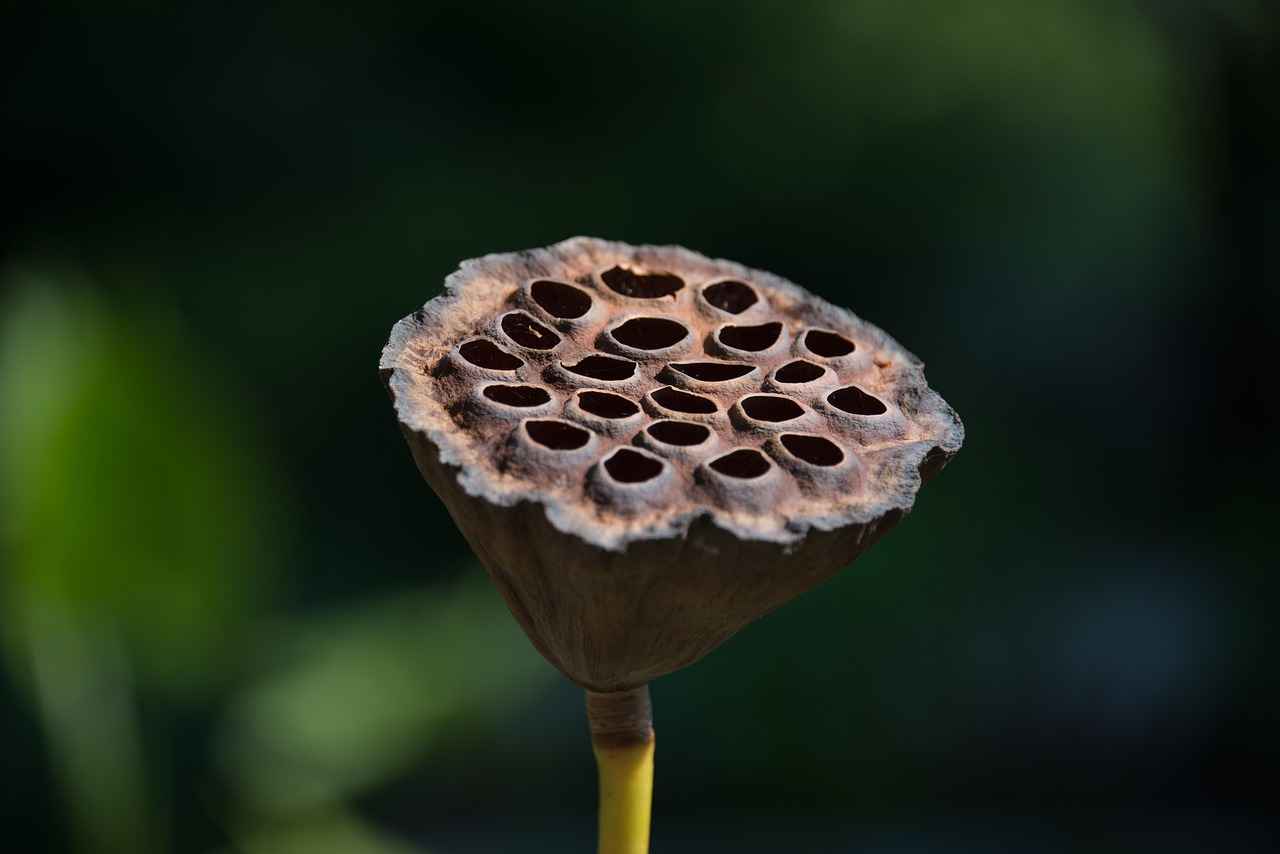
What Are the Health Benefits of Chia Seeds?
Chia seeds have emerged as a powerhouse of nutrition, boasting a myriad of health benefits that can significantly enhance your overall well-being. From aiding digestion to promoting heart health, these tiny seeds are a valuable addition to any diet. In this section, we will explore the remarkable health benefits of chia seeds in detail.
Understanding the health benefits of chia seeds can empower you to make informed dietary choices. Here are some key advantages:
- Improved Digestion: Chia seeds are an excellent source of dietary fiber, which is essential for maintaining a healthy digestive system. The high fiber content helps to regulate bowel movements and prevent constipation.
- Enhanced Heart Health: Rich in omega-3 fatty acids, chia seeds can contribute to cardiovascular health. Omega-3s are known to lower blood pressure and reduce inflammation, thereby decreasing the risk of heart disease.
- Weight Management: The fiber in chia seeds expands in your stomach, promoting a feeling of fullness. This can help curb appetite and reduce overall calorie intake, making it easier to manage weight.
- Bone Health: Chia seeds are loaded with essential minerals such as calcium, magnesium, and phosphorus, which are crucial for maintaining strong bones and preventing osteoporosis.
- Blood Sugar Regulation: Consuming chia seeds may help stabilize blood sugar levels, which is particularly beneficial for individuals with diabetes. Their high fiber content slows down the absorption of sugar in the bloodstream.
The fiber in chia seeds plays a pivotal role in digestive health. A single ounce of chia seeds contains approximately 11 grams of fiber, which is about one-third of the daily recommended intake. When consumed, chia seeds absorb liquid and swell, forming a gel-like substance that aids in digestion and promotes regularity. This property can be particularly beneficial for those struggling with digestive issues.
Chia seeds are one of the richest plant-based sources of omega-3 fatty acids, specifically alpha-linolenic acid (ALA). These fatty acids are known for their role in reducing inflammation and lowering cholesterol levels, which are crucial for heart health. Regular consumption of chia seeds may help lower the risk of heart disease and improve overall cardiovascular function.
For those looking to manage their weight, chia seeds can be a valuable ally. Their ability to absorb liquid and expand in the stomach not only promotes a sense of fullness but also reduces the likelihood of snacking between meals. By incorporating chia seeds into meals, such as smoothies or yogurt, you can effectively manage cravings and support healthy weight loss.
Chia seeds are a fantastic source of minerals essential for bone health. They contain significant amounts of calcium, phosphorus, and magnesium, all of which play a vital role in maintaining bone density and strength. Including chia seeds in your diet can help prevent bone-related issues, especially as you age.
Chia seeds can also assist in regulating blood sugar levels. Their high fiber content slows down the digestion of carbohydrates, leading to a more gradual release of sugar into the bloodstream. This can help prevent spikes in blood sugar levels, making chia seeds a beneficial addition to the diet of those with diabetes or insulin resistance.
In summary, chia seeds are a nutrient-dense superfood that offers numerous health benefits. From improving digestion to supporting heart health, they can easily be incorporated into various meals. By understanding these benefits, you can make informed dietary choices that enhance your overall health and well-being.
Weight Management
When it comes to managing weight effectively, incorporating chia seeds into your diet can be a game changer. These tiny seeds, packed with nutrients and fiber, not only enhance your meals but also support your weight management goals.
The high fiber content in chia seeds plays a crucial role in maintaining satiety. This means that when you consume chia seeds, you feel fuller for a longer period, which can help you avoid unnecessary snacking and reduce overall calorie intake.
- Chia seeds can absorb up to 12 times their weight in water, expanding in your stomach and creating a feeling of fullness.
- The soluble fiber in chia seeds slows down digestion, leading to a gradual release of energy and preventing blood sugar spikes.
- This gradual release helps to stabilize your appetite, making it easier to resist cravings throughout the day.
Integrating chia seeds into your daily meals is simple and versatile. Here are some practical ways to include them:
- Chia Seed Pudding: Mix chia seeds with your choice of milk and let it sit overnight. In the morning, add fruits or nuts for a nutritious breakfast.
- Smoothies: Blend chia seeds into your smoothies for an added fiber boost. They enhance texture without altering the flavor.
- Baking: Substitute a portion of flour in your baking recipes with ground chia seeds to increase fiber content.
Beyond weight management, chia seeds offer various health benefits:
- Rich in Nutrients: Chia seeds are loaded with omega-3 fatty acids, protein, and essential minerals.
- Improved Digestion: The fiber content aids in digestion and promotes a healthy gut.
- Heart Health: Omega-3s found in chia seeds contribute to cardiovascular health by reducing inflammation.
While chia seeds are generally safe for most people, it’s important to consume them in moderation. Here are some considerations:
- Hydration: Since chia seeds absorb a lot of water, make sure to drink plenty of fluids to avoid digestive discomfort.
- Allergies: Although rare, be cautious if you have known allergies to similar seeds or plants.
Incorporating chia seeds into your diet can significantly support your weight management efforts. With their high fiber content and various health benefits, these superfoods are a simple yet effective addition to your meals. Whether in puddings, smoothies, or baked goods, chia seeds can help you feel full and satisfied, making it easier to stick to your dietary goals.
Bone Health
is an essential aspect of overall wellness, particularly as we age. Maintaining strong bones is crucial for preventing fractures and conditions such as osteoporosis. One of the lesser-known dietary heroes that can support bone health is chia seeds. These tiny seeds are not just a trendy superfood; they are packed with nutrients that are vital for maintaining strong and healthy bones.
Chia seeds are incredibly rich in calcium, phosphorus, and magnesium, all of which play significant roles in bone health. Calcium is essential for building and maintaining bone density, while phosphorus helps in the formation of bones and teeth. Magnesium, on the other hand, aids in the absorption of calcium and contributes to bone structure.
One ounce (about 28 grams) of chia seeds contains approximately 18% of the recommended daily intake of calcium. This makes them an excellent option for those who may not consume enough dairy or other calcium-rich foods. Including chia seeds in your diet can help ensure you meet your calcium needs.
Phosphorus is another critical mineral found in chia seeds. It works in conjunction with calcium to build strong bones. An ounce of chia seeds provides about 27% of the daily recommended intake of phosphorus. This makes chia seeds a valuable addition to a diet aimed at improving bone health.
Magnesium is often overlooked, but it is essential for bone health. It helps convert vitamin D into its active form, which is necessary for calcium absorption. Chia seeds contain around 30% of the daily recommended intake of magnesium in just one ounce. This makes them a beneficial food for maintaining bone density and overall skeletal health.
Incorporating chia seeds into your meals is easy and versatile. Here are some practical ways to add them to your diet:
- Chia Seed Pudding: Mix chia seeds with your choice of milk or yogurt and let it sit overnight to create a nutritious pudding.
- Smoothies: Blend chia seeds into your favorite smoothies for an added nutrient boost.
- Salads: Sprinkle chia seeds on salads for an added crunch and nutritional benefit.
- Baking: Use chia seeds in baking recipes as a way to enhance the nutritional profile of muffins, breads, and pancakes.
While chia seeds are generally safe for most people, some may experience digestive discomfort if consumed in large quantities without adequate hydration. It’s important to start with small amounts and gradually increase your intake. Additionally, those with allergies to sesame seeds or other similar seeds should consult a healthcare professional before adding chia seeds to their diet.
In summary, chia seeds are a powerhouse of nutrients that can significantly contribute to maintaining strong bones. Their high content of calcium, phosphorus, and magnesium makes them an excellent addition to a bone-healthy diet. By incorporating chia seeds into your meals, you can enjoy their numerous health benefits while enhancing your overall nutrition.

How to Use Chia Seeds in Your Diet?
Chia seeds are not only a nutritional powerhouse but also incredibly versatile, making them an excellent addition to your diet. Their ability to absorb liquid and form a gel-like consistency opens up a world of culinary possibilities, allowing you to incorporate them into various meals and snacks seamlessly. In this section, we will explore creative ways to use chia seeds in your daily diet, enhancing both flavor and nutrition.
Incorporating chia seeds into your meals can be both fun and beneficial. Here are some popular methods:
- Chia Seed Pudding: This is a favorite among health enthusiasts. To prepare, mix 3 tablespoons of chia seeds with 1 cup of your choice of liquid (such as almond milk or coconut water) and let it sit for at least 30 minutes or overnight in the refrigerator. You can add honey, maple syrup, or fruits for extra flavor.
- Adding to Smoothies: Sprinkling a tablespoon of chia seeds into your smoothie not only boosts its nutritional content but also adds a pleasant texture. Blend it with your favorite fruits, greens, and a source of protein for a well-rounded meal.
- In Baking: Chia seeds can be incorporated into baked goods like muffins, breads, and pancakes. Not only do they add a delightful crunch, but they also enhance the nutritional profile of your treats. For a vegan alternative, you can use chia seeds as an egg substitute by mixing 1 tablespoon of chia seeds with 2.5 tablespoons of water and letting it sit until it thickens.
- Sprinkling on Salads: Chia seeds can be sprinkled on salads for added texture and nutrition. They complement leafy greens, vegetables, and dressings without overpowering the dish.
- Chia Seed Jam: You can create a healthy jam by mixing chia seeds with mashed fruits and a natural sweetener. Allow it to sit until it thickens, and use it as a spread on toast or as a topping for yogurt.
Chia seeds are also an excellent addition to overnight oats. Simply mix oats, chia seeds, milk, and your favorite toppings in a jar, and let them soak overnight for a quick and nutritious breakfast.
Incorporating chia seeds into your diet comes with numerous benefits:
- High in Nutrients: Chia seeds are rich in omega-3 fatty acids, fiber, protein, and essential minerals, making them a fantastic addition to any meal.
- Supports Digestive Health: The high fiber content in chia seeds promotes healthy digestion and helps maintain regular bowel movements.
- Weight Management: Chia seeds can help you feel fuller for longer, which may assist in controlling appetite and reducing calorie intake.
- Heart Health: The omega-3 fatty acids found in chia seeds contribute to cardiovascular health by reducing inflammation and improving cholesterol levels.
In conclusion, chia seeds offer a myriad of ways to enhance your meals while providing substantial health benefits. Whether you choose to enjoy them in a pudding, smoothie, or as a topping, these tiny seeds can significantly impact your overall nutrition. So, don’t hesitate to get creative and start incorporating chia seeds into your diet today!
Chia Seed Pudding
has become a staple in the health and wellness community, celebrated for its simplicity and versatility. This delightful dish is not only easy to prepare but also offers a myriad of health benefits. By combining chia seeds with liquid, typically milk or a milk alternative, the seeds absorb the moisture and swell, resulting in a thick, creamy texture that many find irresistible.
Chia seed pudding is an excellent choice for breakfast, snacks, or even dessert. It is packed with nutrients, making it a nutrient-dense option for anyone looking to boost their diet. The pudding is rich in omega-3 fatty acids, fiber, and protein, all of which contribute to a balanced diet.
Making chia seed pudding is incredibly straightforward. Here’s a simple recipe to get you started:
- Ingredients:
- 1/4 cup chia seeds
- 1 cup of your choice of milk (dairy, almond, coconut, etc.)
- 1-2 tablespoons sweetener (honey, maple syrup, or agave syrup)
- Optional toppings (fruits, nuts, or granola)
Instructions:1. In a bowl, combine chia seeds and milk.2. Stir well to avoid clumping.3. Add sweetener and mix thoroughly.4. Cover and refrigerate for at least 2 hours, or overnight.5. Before serving, stir again and add your favorite toppings.
The beauty of chia seed pudding lies in its adaptability. You can easily customize it to suit your taste preferences. Here are some popular flavor ideas:
- Vanilla: Add vanilla extract for a classic flavor.
- Cocoa: Mix in cocoa powder for a chocolatey twist.
- Fruits: Incorporate pureed fruits like mango, banana, or berries for natural sweetness.
- Spices: A pinch of cinnamon or nutmeg can elevate the flavor profile.
Chia seed pudding is not just a tasty treat; it also offers several health benefits:
- High in Fiber: Chia seeds are an excellent source of fiber, promoting healthy digestion and keeping you full longer.
- Rich in Antioxidants: They contain antioxidants that help combat oxidative stress in the body.
- Supports Bone Health: Chia seeds are rich in calcium, magnesium, and phosphorus, essential for maintaining strong bones.
- Heart Health: The omega-3 fatty acids found in chia seeds support cardiovascular health.
Chia seed pudding can be served in various ways. Here are some ideas:
- As a breakfast bowl topped with fresh fruits and nuts.
- As a snack in a jar for on-the-go convenience.
- As a dessert layered with yogurt and granola.
In summary, chia seed pudding is a delicious and nutritious option that can easily fit into any meal plan. With its numerous health benefits and endless flavor possibilities, it’s no wonder that this dish has captured the hearts of health enthusiasts everywhere.
Sprinkling on Salads and Smoothies
Chia seeds have become a popular addition to many diets, and for good reason. Their versatility and nutritional profile make them an ideal ingredient for enhancing various dishes. One of the simplest ways to incorporate these tiny powerhouses into your meals is by sprinkling them on salads or blending them into smoothies. This section will explore the benefits and practical tips for using chia seeds in these two popular culinary applications.
Salads are often seen as a healthy meal option, and adding chia seeds can further enhance their nutritional value. Rich in omega-3 fatty acids, fiber, and protein, chia seeds contribute to a balanced diet. Here are some compelling reasons to include them in your salads:
- Texture and Crunch: Chia seeds have a unique crunch that adds an interesting texture to salads, making each bite more enjoyable.
- Flavor Neutrality: Their mild flavor allows them to blend seamlessly with various salad dressings and ingredients, enhancing the overall taste without overpowering it.
- Nutritional Boost: Just a tablespoon of chia seeds can provide a significant amount of essential nutrients, including calcium and antioxidants, which support overall health.
Smoothies are an excellent way to pack in nutrients, and chia seeds can elevate your smoothie game. Here’s how to effectively incorporate them:
- Blend for Smooth Consistency: When blended, chia seeds can help thicken your smoothie, giving it a creamy texture while adding nutritional benefits.
- Pre-soaking for Enhanced Digestion: Soaking chia seeds in water or your smoothie base for about 10-15 minutes before blending can improve digestibility and nutrient absorption.
- Flavor Combinations: Chia seeds pair well with fruits like bananas, berries, and mangoes, enriching the flavor profile while providing health benefits.
Incorporating chia seeds into your diet, whether through salads or smoothies, offers numerous health benefits:
- Improved Digestive Health: The high fiber content in chia seeds aids digestion and promotes a healthy gut.
- Weight Management: Chia seeds can help you feel fuller for longer, assisting in appetite control and weight management.
- Heart Health: The omega-3 fatty acids in chia seeds are beneficial for heart health, helping to lower cholesterol levels and reduce inflammation.
Aside from salads and smoothies, chia seeds can be incorporated into a variety of dishes:
- Chia Seed Pudding: Combine chia seeds with milk or a dairy-free alternative, let them soak overnight, and enjoy a nutritious breakfast or snack.
- Baked Goods: Add chia seeds to muffins, breads, or pancakes for an extra nutrient boost and delightful crunch.
- Energy Bars: Mix chia seeds into homemade energy bars or granola for a healthy snack on the go.
In conclusion, sprinkling chia seeds on salads or blending them into smoothies not only enhances the flavor but also significantly boosts the nutritional profile of your meals. Their versatility makes them an ideal addition to a variety of dishes, providing health benefits that support overall wellness. Whether you are looking to improve your digestive health, manage your weight, or simply add a nutritious twist to your meals, chia seeds are a fantastic choice.
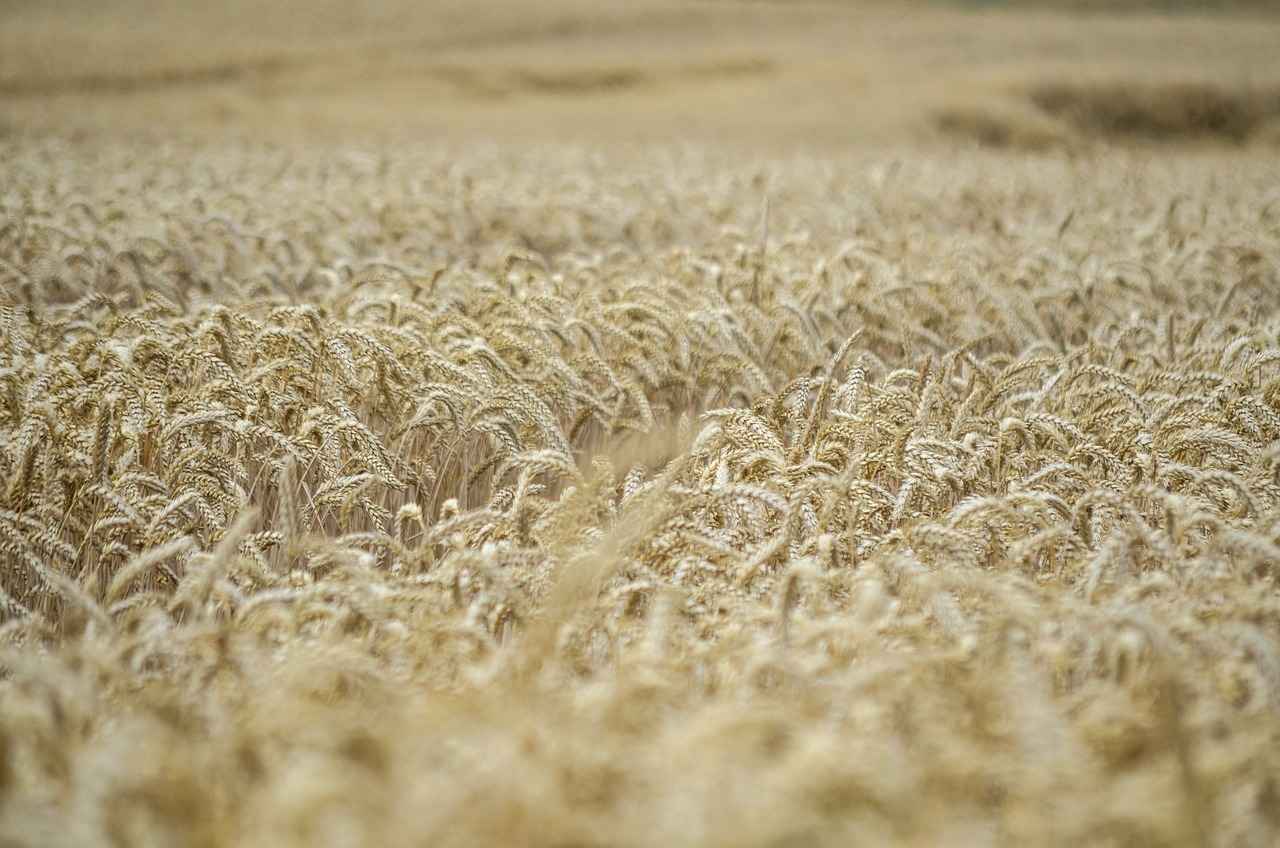
Are There Any Risks or Side Effects of Chia Seeds?
Chia seeds have become a staple in many health-conscious diets due to their numerous benefits. However, like any food, they are not without potential risks. Understanding these risks can help you make informed decisions about incorporating chia seeds into your diet.
While chia seeds are generally safe for most individuals, some may experience digestive discomfort or other side effects. It’s essential to recognize these potential issues to enjoy chia seeds responsibly.
- Bloating: Some people report feeling bloated after consuming chia seeds, especially when eaten in large quantities or without adequate hydration.
- Gas: Gas can occur as a result of the high fiber content in chia seeds, particularly for those who are not used to consuming fiber-rich foods.
- Constipation: In some cases, if chia seeds are not consumed with enough liquid, they can absorb water in the digestive tract, leading to constipation.
To enjoy chia seeds without discomfort, consider the following tips:
- Start Small: Begin with a small amount and gradually increase your intake to allow your digestive system to adjust.
- Hydrate: Always consume chia seeds with plenty of water. A good rule of thumb is to drink at least 8 ounces of water for every tablespoon of chia seeds.
- Mix Well: Incorporate chia seeds into smoothies or puddings, where they can be soaked in liquid before consumption.
Although rare, some individuals may experience allergic reactions to chia seeds. Symptoms can include:
- Itching or Rash: Skin reactions such as itching or rashes may occur in sensitive individuals.
- Swelling: Swelling of the lips, tongue, or throat can indicate a more severe allergic reaction.
- Gastrointestinal Distress: Nausea or vomiting may also be signs of an allergy.
If you suspect an allergy, it is advisable to consult a healthcare professional for appropriate testing and advice.
Chia seeds may interact with certain medications, particularly those that affect blood sugar levels or blood clotting. If you are on medications such as:
- Anticoagulants: Chia seeds may enhance the effects of blood thinners, increasing the risk of bleeding.
- Diabetes Medications: Due to their potential to lower blood sugar levels, chia seeds may interact with diabetes medications, requiring careful monitoring of blood sugar levels.
Always consult with a healthcare provider if you have concerns about potential interactions.
Pregnant women can safely consume chia seeds in moderation. However, they should be mindful of the following:
- Hydration: Increased fiber intake should be accompanied by adequate hydration to prevent digestive issues.
- Consultation: It is always best to consult with a healthcare provider before making significant dietary changes during pregnancy.
In summary, while chia seeds offer numerous health benefits, being aware of the potential risks and side effects is crucial. By understanding how to consume them properly and recognizing any adverse reactions, you can enjoy the nutritional advantages of chia seeds without discomfort.
Digestive Issues
Chia seeds are often heralded as a nutritional powerhouse, but some individuals may encounter digestive issues after consuming them. These issues can include bloating, gas, and discomfort, particularly for those who are unaccustomed to high-fiber foods.
One of the primary reasons for these digestive disturbances is the high fiber content found in chia seeds. When consumed in large quantities, especially without adequate hydration, the fiber can absorb water and expand in the digestive tract, leading to a sensation of fullness and, in some cases, discomfort. For many, this can result in bloating or gas, which can be quite uncomfortable.
To mitigate these potential side effects, it is crucial to gradually increase your intake of chia seeds. Starting with a small amount, such as one teaspoon, and slowly working up to the recommended serving size can help your digestive system adjust. This gradual increase allows your gut to adapt to the higher fiber content without overwhelming it.
Another essential factor to consider is hydration. Chia seeds can absorb up to 12 times their weight in water. Therefore, it is vital to drink plenty of fluids when consuming chia seeds. This not only helps in preventing digestive discomfort but also aids in the seeds’ ability to expand and provide their full benefits. Aim for at least 8-10 glasses of water a day, and consider drinking a glass of water with your chia seeds to ensure proper hydration.
For those who are particularly sensitive to fiber, it may be beneficial to soak chia seeds before consumption. Soaking them in water or another liquid for at least 30 minutes allows them to expand and form a gel-like consistency, making them easier to digest. This method can help alleviate some of the digestive discomfort associated with dry chia seeds.
It’s also important to listen to your body. If you notice persistent bloating or gas after consuming chia seeds, it may be wise to consult with a healthcare professional. They can provide personalized advice and help determine if chia seeds are suitable for your dietary needs.
In summary, while chia seeds are a nutrient-rich addition to your diet, being mindful of your intake and hydration levels is crucial. By gradually increasing your consumption and ensuring you stay hydrated, you can enjoy the numerous health benefits of chia seeds without the unpleasant side effects.
Allergic Reactions
to chia seeds are a topic of increasing interest as more individuals incorporate this superfood into their diets. While chia seeds are generally recognized as safe and beneficial, it is essential to be aware of the potential for , which, although rare, can occur in some individuals.
Allergic reactions can manifest in various ways. Common symptoms include:
- Skin Reactions: These may include hives, itching, or rashes.
- Gastrointestinal Issues: Symptoms such as nausea, vomiting, or diarrhea can occur.
- Respiratory Problems: Some individuals may experience difficulty breathing, wheezing, or nasal congestion.
- Anaphylaxis: In severe cases, a life-threatening reaction known as anaphylaxis can occur, requiring immediate medical attention.
While most people can enjoy chia seeds without issues, certain groups may be at a higher risk for allergic reactions:
- Individuals with Existing Allergies: Those with known allergies to other seeds, such as sesame or flaxseed, may be more susceptible.
- People with Allergies to Pollen: Some studies suggest a correlation between pollen allergies and seed allergies.
- Individuals with Autoimmune Conditions: Those with autoimmune diseases may have a heightened sensitivity to various foods, including chia seeds.
If you suspect that you are experiencing an allergic reaction to chia seeds, it is crucial to take the following steps:
- Stop Consumption: Immediately cease eating chia seeds or products containing them.
- Monitor Symptoms: Keep track of your symptoms and their severity.
- Consult a Healthcare Professional: If symptoms persist or worsen, seek medical advice promptly. A healthcare provider can perform tests to confirm an allergy and recommend appropriate management strategies.
For those who are not allergic, chia seeds can be a fantastic addition to your diet. However, it is essential to introduce them gradually:
- Start Small: Begin with a small amount, such as one teaspoon, to see how your body reacts.
- Stay Hydrated: Chia seeds absorb a significant amount of water, so it is vital to drink plenty of fluids to avoid digestive discomfort.
- Consult a Dietitian: If you have concerns about allergies or how to incorporate chia seeds into your diet, consider speaking with a registered dietitian for personalized advice.
In conclusion, while chia seeds offer numerous health benefits, it is important to remain vigilant regarding potential allergic reactions. By understanding the symptoms, recognizing who is at risk, and knowing how to safely incorporate chia seeds into your diet, you can enjoy this superfood while minimizing any potential health risks. Always consult with a healthcare professional if you have concerns or experience unusual symptoms after consumption.
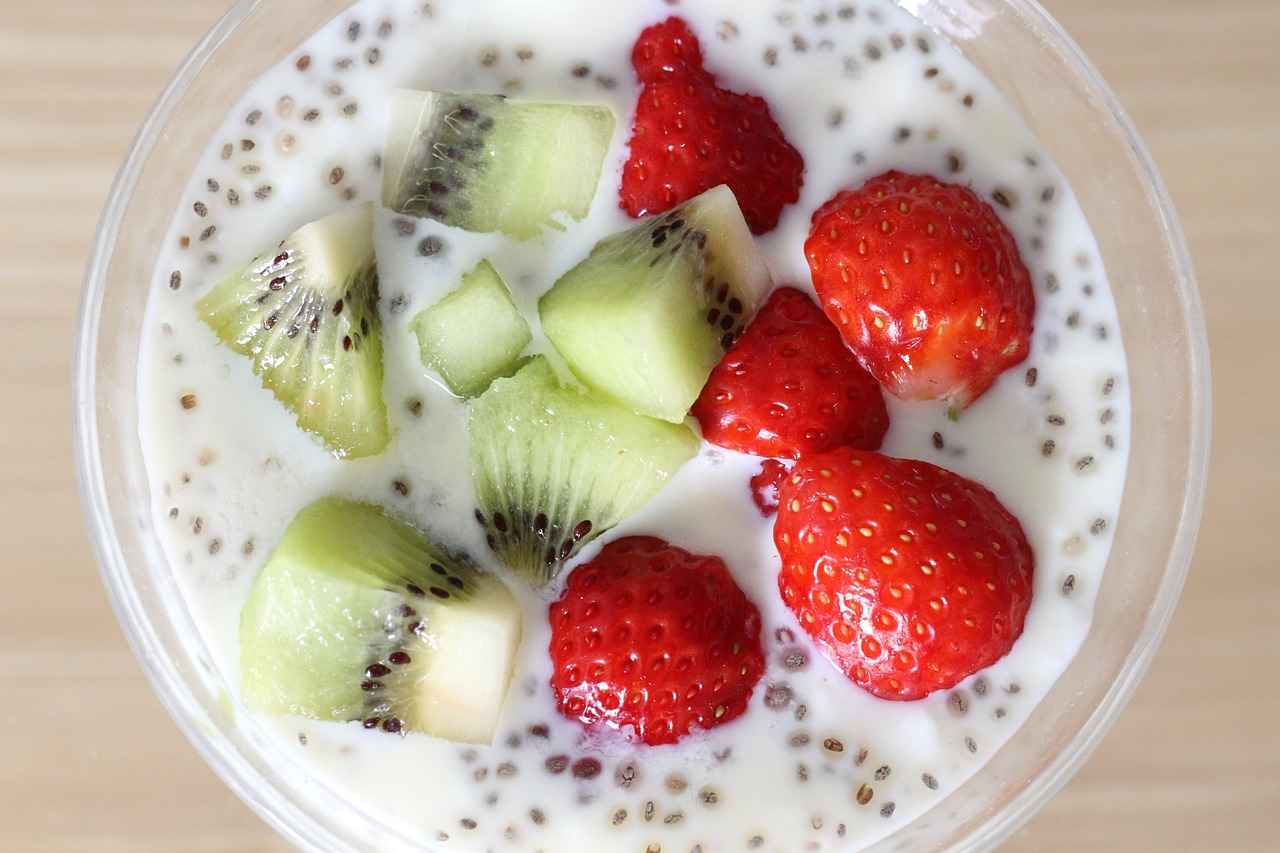
Where to Buy Chia Seeds?
When it comes to incorporating chia seeds into your diet, knowing where to buy them is essential for ensuring you get the best quality. With their rise in popularity as a superfood, chia seeds are now widely available in various retail settings. This guide will help you navigate the options available for purchasing chia seeds.
- Grocery Stores: Most grocery stores now carry chia seeds, often found in the health food aisle or near other seeds and nuts. Look for both whole seeds and ground chia seeds.
- Health Food Stores: Specialty health food stores typically offer a wider variety of chia seeds, including organic, non-GMO, and specialty blends. These stores often prioritize quality and freshness.
- Online Retailers: Shopping online provides access to numerous brands and bulk options. Websites like Amazon, Thrive Market, and health-focused online stores often have competitive prices and customer reviews to help you choose.
Choosing quality chia seeds can significantly impact their nutritional benefits. Here are some tips:
- Organic Certification: Look for chia seeds that are labeled organic. This ensures that they are grown without harmful pesticides or chemicals.
- Non-GMO: Verify that the chia seeds are non-genetically modified. This information is often found on the packaging or product description.
- Freshness: Check the packaging date. Chia seeds can lose their nutritional value over time, so choose products with a recent packaging date.
- Packaging: Opt for seeds that come in airtight containers to maintain freshness and prevent moisture exposure.
Prices for chia seeds can vary widely depending on the brand, quality, and retailer. Here are some strategies for finding the best deals:
- Bulk Purchases: Buying in bulk can often save you money. Many health food stores and online retailers offer discounts for larger quantities.
- Sales and Promotions: Keep an eye out for sales, especially during health-focused promotional events or holidays. Signing up for newsletters from your favorite stores can alert you to discounts.
- Price Comparison Websites: Utilize websites that compare prices across different retailers. This can help you find the best deal without having to visit multiple sites.
While personal preference plays a role in brand selection, some popular and reputable brands include:
- Navitas Organics: Known for high-quality organic chia seeds.
- Bob’s Red Mill: Offers a variety of chia seed products, including whole and ground options.
- Healthworks: Provides organic chia seeds at competitive prices, often available in bulk.
Both local and online shopping have their advantages. Local stores allow you to inspect the product before purchase, while online shopping offers convenience and often a broader selection. Consider your needs and preferences when deciding where to buy.
In summary, purchasing chia seeds can be a straightforward process if you know where to look and what to consider. By focusing on quality, freshness, and price comparison, you can ensure that you are making a healthy addition to your diet. Whether you choose to shop at a grocery store, a health food outlet, or online, the options are plentiful, making it easier than ever to enjoy the benefits of this remarkable superfood.
Choosing Quality Chia Seeds
When it comes to incorporating chia seeds into your diet, selecting high-quality seeds is essential for maximizing their health benefits. With the growing popularity of this superfood, many options are available in the market. Here’s a detailed guide on how to choose the best chia seeds for your needs.
When purchasing chia seeds, it is crucial to consider several factors to ensure you are getting a product that is not only nutritious but also safe to consume. Here are some key aspects to keep in mind:
- Organic Certification: Opt for organic chia seeds whenever possible. Organic farming practices minimize exposure to harmful pesticides and chemicals, making them a healthier choice.
- Non-GMO: Look for seeds that are labeled as non-GMO. This ensures that the seeds have not been genetically modified, preserving their natural benefits.
- Freshness: Check the packaging date. Fresh chia seeds are more nutritious and flavorful. Ideally, you should choose seeds that have been packaged recently.
- Packaging: Ensure that the chia seeds are sold in airtight packaging to protect them from moisture and light, which can degrade their quality.
Freshness plays a vital role in the quality of chia seeds. Over time, chia seeds can lose their nutritional value, particularly their omega-3 fatty acids. Consuming stale seeds may not provide the health benefits you expect. To ensure freshness:
- Check for a best by date on the packaging.
- Store them in a cool, dark place, preferably in an airtight container.
Quality chia seeds should have a consistent color and texture. Here’s how you can identify them:
- Color: High-quality chia seeds are typically black or white. Avoid seeds that appear discolored or have an uneven color.
- Texture: The seeds should feel dry and not clump together. Clumping can indicate moisture exposure.
Chia seeds are widely available in grocery stores, health food shops, and online. Here are some tips for finding quality seeds:
- Reputable Brands: Choose well-known brands that have positive reviews and a good reputation.
- Health Food Stores: These stores often carry organic and non-GMO options, ensuring you get quality products.
- Online Retailers: Shopping online allows you to compare different brands and read customer reviews before making a purchase.
As with any popular health food, there are misconceptions about chia seeds. Here are a few:
- All Chia Seeds Are the Same: Not all chia seeds are created equal. Quality varies significantly based on farming and processing methods.
- Chia Seeds Are Only for Health Enthusiasts: In reality, anyone can benefit from adding chia seeds to their diet, as they are versatile and easy to incorporate into various meals.
In summary, when choosing chia seeds, prioritize organic and non-GMO options, check for freshness, and ensure proper packaging. By being mindful of these factors, you can enjoy the numerous health benefits that chia seeds offer.
Price Comparison
is an essential aspect of shopping for chia seeds, especially given the variety of brands and retailers available in the market today. Understanding the price dynamics can help you make informed decisions and ensure you get the best value for your money.
Chia seeds can be found in various forms, including whole seeds, ground seeds, and even as part of health supplements. The prices can differ significantly based on factors such as brand reputation, packaging, and whether the seeds are organic or non-organic. Typically, prices for chia seeds can range from $5 to $20 per pound, depending on these variables.
- Brand Reputation: Established brands may charge a premium due to their perceived quality and trustworthiness.
- Organic Certification: Organic chia seeds often cost more because of the farming practices involved in their production.
- Retailer Markup: Different retailers have varying pricing strategies, which can affect the final price you pay.
To find the best deals on chia seeds, consider the following strategies:
- Online Shopping: Websites like Amazon, Thrive Market, and health food stores often provide competitive pricing. Use price comparison tools or apps to track fluctuations.
- Bulk Buying: Purchasing in bulk can lead to significant savings. Many retailers offer discounts for larger quantities.
- Coupons and Promotions: Keep an eye out for special promotions, discounts, or coupons that can reduce your overall cost.
While it may be tempting to choose the cheapest option available, it’s crucial to consider the quality of the chia seeds. High-quality seeds tend to have better nutritional profiles and taste. Look for products that have:
- Freshness: Check the packaging date to ensure you are buying fresh seeds.
- Certifications: Opt for seeds that are certified organic or non-GMO, as these often indicate higher quality.
Chia seeds can be found in various places, including:
- Local Grocery Stores: Many supermarkets now carry chia seeds in their health food sections.
- Health Food Stores: Specialty stores often provide a wider range of brands and types.
- Online Retailers: Shopping online can offer better deals and convenience, allowing you to compare prices across multiple platforms.
In conclusion, conducting a thorough price comparison for chia seeds is essential not only for finding the best deals but also for ensuring you get a quality product. By utilizing various shopping strategies and being mindful of what affects pricing, you can enjoy the numerous health benefits of chia seeds without overspending.
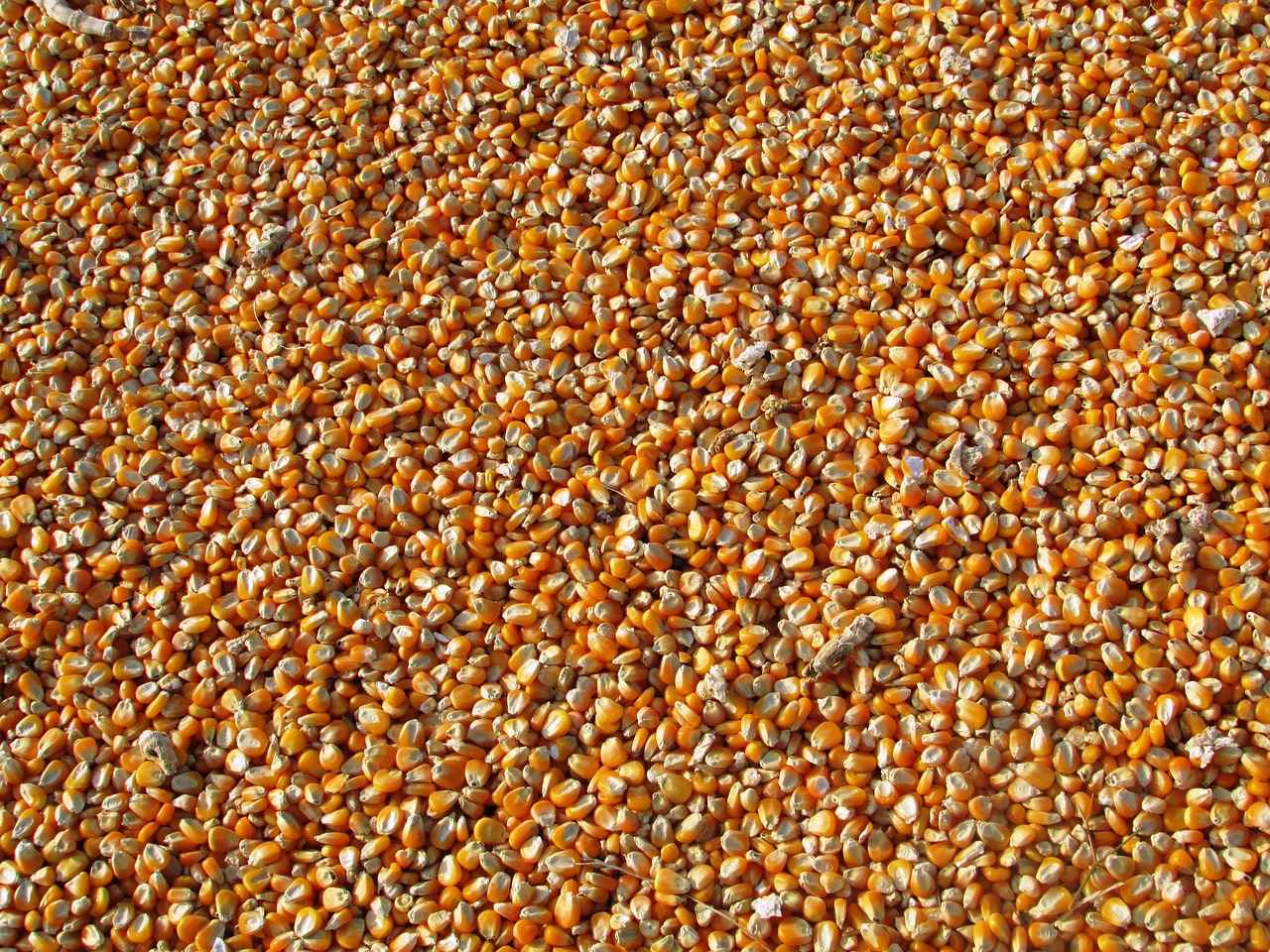
How to Store Chia Seeds Properly?
Proper storage of chia seeds is essential for maintaining their freshness and nutritional value. Knowing how to store them effectively can significantly extend their shelf life, allowing you to enjoy their health benefits for a longer period. In this section, we will explore the best practices for storing chia seeds, how long they last, and tips for ensuring they remain in optimal condition.
To keep chia seeds fresh, it is important to follow best storage practices. Here are some key tips:
- Store in an Airtight Container: Use a glass jar or a plastic container with a tight-fitting lid. This prevents air from entering and keeps moisture at bay.
- Keep in a Cool, Dark Place: Chia seeds should be stored in a cool and dry environment, away from direct sunlight. A pantry or cupboard is ideal.
- Avoid Humidity: Moisture can cause chia seeds to clump together or even spoil. Make sure the storage area is dry.
When properly stored, chia seeds can last for up to two years or even longer. However, it’s important to check for signs of spoilage before use. Here are some indicators:
- Smell: Fresh chia seeds have a mild, nutty aroma. If they smell rancid or off, it’s best to discard them.
- Appearance: Look for any discoloration or clumping, which may indicate moisture exposure.
- Taste: A small taste test can help determine freshness. If they taste bitter or off, it’s time to throw them away.
If you buy chia seeds in bulk or want to extend their shelf life even further, consider freezing them. Freezing can preserve their nutrients and freshness. Here’s how to do it:
- Use an Airtight Freezer Bag: Place chia seeds in a freezer-safe bag, removing as much air as possible before sealing.
- Label and Date: Always label the bag with the date of freezing to keep track of freshness.
- Thawing: When ready to use, simply take out the portion you need and let it sit at room temperature for a few minutes before adding it to your recipes.
Understanding the importance of proper storage is crucial for several reasons:
- Maintaining Nutritional Value: Chia seeds are rich in omega-3 fatty acids, fiber, and antioxidants. Proper storage helps retain these beneficial nutrients.
- Preventing Spoilage: Exposure to air, moisture, and light can lead to rancidity and spoilage. Proper storage minimizes these risks.
- Cost-Effectiveness: By extending the shelf life of chia seeds through proper storage, you can save money and reduce food waste.
In conclusion, storing chia seeds properly is a simple yet effective way to ensure they remain fresh and nutritious. By following the best practices outlined above, you can enjoy the numerous health benefits of chia seeds for an extended period. Whether you use them in smoothies, puddings, or baked goods, knowing how to store them correctly will enhance your culinary experience.
Best Storage Practices
Best Storage Practices for Chia Seeds
Chia seeds are a nutrient powerhouse, but to fully benefit from their health properties, it is vital to store them properly. Proper storage not only preserves their nutritional value but also extends their shelf life, ensuring that you can enjoy these tiny seeds for months on end.
One of the most important factors in storing chia seeds is to keep them in a cool, dry place. This means avoiding areas that are prone to heat and humidity, such as near the stove or in a damp pantry. Instead, consider storing them in a pantry or cupboard that maintains a stable temperature.
- Use Airtight Containers: Chia seeds should be kept in airtight containers to prevent moisture from entering. Glass jars, vacuum-sealed bags, or high-quality plastic containers with tight-fitting lids are excellent options. This helps to maintain their crispness and prevents the seeds from becoming gummy.
- Avoid Light Exposure: Light can degrade the quality of chia seeds over time. Store them in a dark place or use opaque containers to shield them from light. This simple step can significantly prolong their freshness.
- Label and Date: If you purchase chia seeds in bulk, it’s wise to label your containers with the purchase date. This practice helps you keep track of how long the seeds have been stored and ensures you use the older seeds first.
How Long Do Chia Seeds Last?
When stored correctly, chia seeds can last for up to 2 years. However, it’s essential to check for any signs of spoilage before use. Look for changes in smell, color, or texture. Fresh chia seeds should have a mild, nutty aroma and a consistent color.
Can Chia Seeds Be Refrigerated?
While refrigeration is not necessary, it can help prolong the shelf life of chia seeds, especially in warmer climates. If you choose to refrigerate them, make sure they are in a well-sealed container to prevent moisture absorption. This method is particularly useful if you buy chia seeds in bulk.
Signs of Spoilage
It’s essential to be aware of the signs of spoilage when it comes to chia seeds. If you notice an off smell, unusual discoloration, or if the seeds have clumped together, it’s best to discard them. Consuming spoiled seeds can lead to digestive discomfort.
Conclusion
By following these best storage practices, you can ensure that your chia seeds remain fresh and nutritious. Proper storage not only enhances their longevity but also allows you to enjoy their numerous health benefits without compromise. Whether you sprinkle them on salads, mix them into smoothies, or use them in baking, well-stored chia seeds will always be ready to boost your meals.
How Long Do Chia Seeds Last?
Chia seeds have become a staple in many health-conscious diets due to their impressive nutritional profile. However, one common question that arises is, “How long do chia seeds last?” Understanding the shelf life of these tiny seeds is crucial for both safety and maintaining their nutritional benefits.
The longevity of chia seeds largely depends on how they are stored. When kept in optimal conditions, they can last for several years. However, several factors can affect their freshness:
- Storage Conditions: Chia seeds should be stored in a cool, dry place. Exposure to heat, moisture, and light can significantly reduce their shelf life.
- Packaging: Keeping chia seeds in an airtight container is essential. This prevents air and moisture from degrading their quality.
- Quality at Purchase: Freshness at the time of purchase plays a vital role. Always check the expiration date and look for reputable brands.
To maximize the shelf life of chia seeds, consider the following storage tips:
- Airtight Container: Use a glass jar or a plastic container with a tight seal to prevent air exposure.
- Cool Environment: Store them in a pantry or cupboard away from heat sources like stoves or ovens.
- Refrigeration: For extended freshness, consider refrigerating chia seeds, especially in warmer climates.
Even with proper storage, it’s important to regularly check for signs of spoilage before consuming chia seeds. Here are some indicators:
- Unpleasant Odor: Fresh chia seeds have little to no smell. If they emit a rancid or off-putting odor, it’s best to discard them.
- Change in Appearance: Look for any discoloration or clumping. Fresh chia seeds should be uniform in color and texture.
- Insect Infestation: If you notice any bugs or pests in your storage container, it’s a clear sign that the seeds should not be consumed.
While chia seeds do not have a strict expiration date, they can lose their nutritional potency over time. Consuming expired chia seeds may not necessarily be harmful, but they might not provide the health benefits you expect. It’s always wise to check for freshness before adding them to your meals.
To ensure you’re getting the best from your chia seeds, here are some practical tips:
- Use Within a Reasonable Time Frame: Even though they can last for years, try to consume them within six months to a year for optimal health benefits.
- Incorporate into Meals: Regularly add chia seeds to your smoothies, salads, or baked goods to ensure they are used up before they spoil.
- Monitor Storage Conditions: Regularly check the storage environment to ensure it remains cool and dry.
In conclusion, chia seeds can last for several years when stored properly, but it’s essential to monitor their condition regularly. By following the recommended storage practices and being aware of spoilage signs, you can enjoy the numerous health benefits of chia seeds without concern.
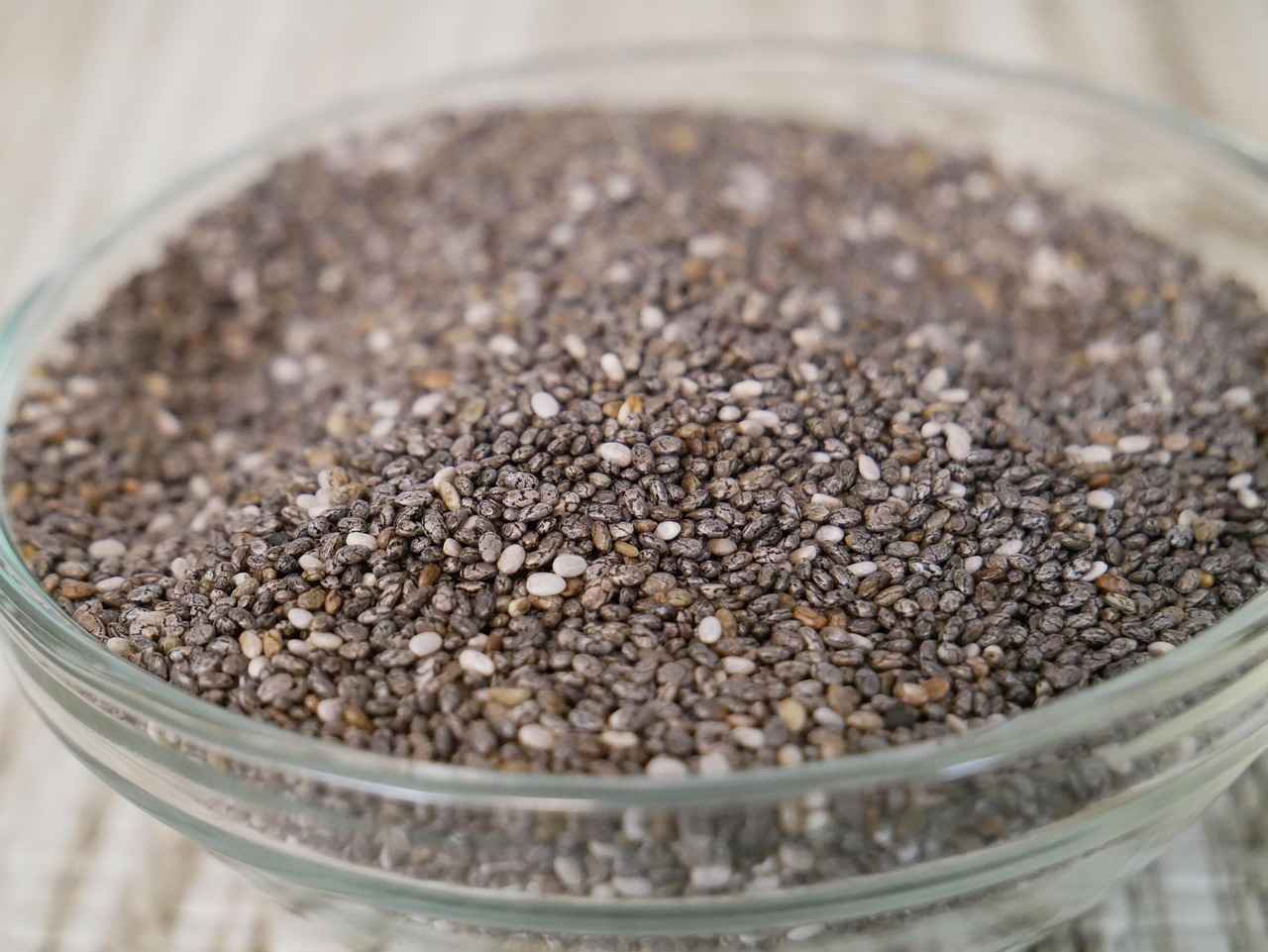
Can Chia Seeds Be Used in Baking?
Chia seeds are not just a trendy superfood; they can also elevate your baking game significantly. When incorporated into your recipes, these tiny seeds can offer both nutritional benefits and a unique texture. Understanding how to use chia seeds in baking can open a world of culinary possibilities.
Why Use Chia Seeds in Baking?
Chia seeds are packed with essential nutrients, including omega-3 fatty acids, fiber, and protein. Adding them to your baked goods not only enhances their nutritional profile but also contributes to a satisfying crunch. Their ability to absorb moisture makes them an excellent ingredient for achieving the desired texture in various recipes.
How to Incorporate Chia Seeds in Your Baking?
- Chia Egg Substitute: For those following a vegan diet, chia seeds can serve as an effective egg substitute. Combine one tablespoon of chia seeds with three tablespoons of water, let it sit for about 15 minutes, and you’ll have a gel-like mixture that mimics the binding properties of eggs.
- Boosting Nutritional Value: Chia seeds can be easily sprinkled into muffin, bread, or pancake batter. This simple addition can transform your favorite recipes into healthier versions without compromising on taste.
- Creating Texture: When added to baked goods, chia seeds provide a delightful crunch. Their unique texture can enhance the overall mouthfeel of items like cookies and granola bars.
What Are the Best Baking Recipes for Chia Seeds?
Here are some delicious ideas to get you started:
- Chia Seed Muffins: Incorporate chia seeds into your muffin batter for a nutritious breakfast option. They pair well with fruits like blueberries or bananas.
- Chia Bread: Add chia seeds to your bread dough for an extra boost of fiber and omega-3s. They can also improve the bread’s moisture retention.
- Chia Pancakes: Mix chia seeds into your pancake batter for a healthy twist. They add a nice texture and can be complemented with maple syrup or fresh fruit.
Are There Any Tips for Baking with Chia Seeds?
When incorporating chia seeds into your baking, consider the following tips:
- Hydration: Since chia seeds absorb liquid, you may need to adjust the liquid content in your recipes to prevent dryness.
- Experimentation: Start with small amounts to find the right balance that suits your taste preferences and desired texture.
- Storage: Keep chia seeds in an airtight container in a cool, dry place to maintain their freshness and nutritional value.
Can Chia Seeds Replace Other Ingredients?
Yes, chia seeds can replace certain ingredients in baking. For instance, they can substitute eggs in vegan recipes, as mentioned earlier. Additionally, they can replace a portion of flour in some recipes, providing a boost in fiber and nutrients.
Final Thoughts on Chia Seeds in Baking
In conclusion, chia seeds are a versatile ingredient that can enhance both the nutritional value and texture of your baked goods. By experimenting with different recipes and techniques, you can discover new ways to incorporate this superfood into your baking routine. Whether you’re making muffins, bread, or pancakes, chia seeds can be a fantastic addition to your culinary repertoire.
Chia Egg Substitute
Chia seeds are not only a nutritional powerhouse but also a versatile ingredient in the kitchen. One of their most popular uses is as a vegan egg substitute in baking. This innovative application allows those following a plant-based diet to enjoy a wide range of baked goods without compromising on texture or flavor.
A chia egg is created by mixing chia seeds with water, resulting in a gel-like consistency that mimics the binding properties of eggs. To make a chia egg, simply combine one tablespoon of chia seeds with three tablespoons of water. Let the mixture sit for about 10-15 minutes until it thickens. This mixture can replace one egg in most recipes.
There are several reasons to consider using chia seeds as an egg substitute:
- Vegan-Friendly: Chia seeds provide a plant-based alternative to eggs, making them suitable for vegans and those with egg allergies.
- Rich in Nutrients: Chia seeds are packed with omega-3 fatty acids, fiber, and protein, enhancing the nutritional profile of your baked goods.
- Easy to Use: The process of making a chia egg is simple and quick, requiring minimal preparation.
When chia seeds are mixed with water, they absorb the liquid and swell, forming a gel. This gel acts as a binder, helping to hold ingredients together and providing moisture to the final product. This is particularly beneficial in recipes for:
- Muffins: Chia eggs can keep muffins moist and fluffy.
- Breads: They help create a cohesive dough without the need for eggs.
- Pancakes: Chia eggs can add a slight nutty flavor while maintaining a light texture.
To ensure the best results when using chia eggs in your recipes, consider the following tips:
- Adjust Liquid Ingredients: Since chia seeds absorb moisture, you may need to slightly reduce the amount of liquid in your recipe.
- Experiment with Ratios: While one chia egg typically replaces one egg, some recipes may benefit from using two chia eggs for added moisture and binding.
- Combine with Other Ingredients: Chia eggs work well in conjunction with other binding agents like applesauce or mashed bananas for enhanced flavor and texture.
Chia eggs can be incorporated into a variety of recipes, offering flexibility and creativity in the kitchen:
- Vegan Brownies: Replace eggs with chia eggs for fudgy, rich brownies.
- Cookies: Use chia eggs in your favorite cookie recipes for a chewy texture.
- Energy Bars: Add chia eggs to homemade energy bars for improved binding and nutrition.
Using chia seeds as a vegan egg substitute is a practical and nutritious option for anyone looking to enhance their baking. With their ability to bind ingredients and add valuable nutrients, chia eggs are a fantastic addition to your culinary repertoire. So, the next time you’re whipping up a batch of cookies or a loaf of bread, consider reaching for those tiny seeds to create delicious, plant-based treats!
Enhancing Baked Goods
with chia seeds is an innovative way to boost nutrition while adding a unique texture to your favorite recipes. These tiny seeds are not only versatile but also packed with essential nutrients that can transform ordinary baked goods into superfood treats. Whether you’re making muffins, breads, or pancakes, incorporating chia seeds can elevate both the flavor and health benefits of your creations.
Chia seeds are an excellent choice for baking due to their nutritional benefits and versatility. They are rich in omega-3 fatty acids, fiber, and protein, making them a perfect addition to any recipe. Their ability to absorb liquid allows them to create a gel-like consistency, which can help bind ingredients together, especially in vegan baking.
When adding chia seeds to muffins, you can mix them directly into the dry ingredients or soak them in water to form a gel before adding them to the batter. This not only enhances the moisture content but also adds a delightful crunch that complements the muffin’s texture. For a nutritious twist, try adding 1-2 tablespoons of chia seeds to your standard muffin recipe. This small addition can increase the fiber content significantly, making your muffins more satisfying and healthy.
Chia seeds can also be a fantastic addition to homemade bread. They can be sprinkled on top before baking for a decorative touch or mixed into the dough for added nutrition. When incorporated into bread, chia seeds contribute to a chewy texture and enhance the overall flavor. Consider adding 3 tablespoons of chia seeds to your bread recipe to reap the benefits without altering the taste.
For fluffy pancakes, chia seeds can be mixed into the batter or used as a chia egg substitute. To create a chia egg, combine 1 tablespoon of chia seeds with 3 tablespoons of water and let it sit for about 15 minutes until it thickens. This mixture can replace one egg in pancake recipes, providing a plant-based option that still yields delicious results. The addition of chia seeds not only enhances the nutritional profile of pancakes but also adds a subtle crunch that pairs well with maple syrup or fruit toppings.
- Chocolate Chip Chia Muffins: Add dark chocolate chips and chia seeds for a decadent yet healthy treat.
- Herb and Cheese Bread: Combine chia seeds with herbs like rosemary or thyme for a savory bread option.
- Banana Chia Pancakes: Mash ripe bananas into the batter for natural sweetness along with chia seeds.
To maintain the freshness of chia seeds, store them in an airtight container in a cool, dry place. This will help preserve their nutritional value and prevent them from becoming rancid. Proper storage ensures that you can enjoy the health benefits of chia seeds for months to come.
Incorporating chia seeds into your baking not only enhances the nutritional content but also introduces a delightful texture that can elevate your culinary creations. From muffins to pancakes, chia seeds are a simple yet powerful addition to your kitchen pantry.
Frequently Asked Questions
- What are the health benefits of chia seeds?
Chia seeds are packed with nutrients that can improve digestion, support heart health, and aid in weight management. Their high fiber content keeps you feeling full, while omega-3 fatty acids promote brain function.
- How can I incorporate chia seeds into my diet?
You can easily add chia seeds to your meals! Try mixing them into smoothies, sprinkling them on salads, or making delicious chia seed pudding. Their mild flavor makes them a versatile ingredient.
- Are there any side effects of consuming chia seeds?
While chia seeds are generally safe, some people may experience digestive issues like bloating or gas, especially if they don’t drink enough water. It’s best to start with small amounts and increase gradually.
- How should I store chia seeds?
To keep your chia seeds fresh, store them in a cool, dry place in an airtight container. Proper storage can extend their shelf life, allowing you to enjoy their benefits for a longer time.
- Can I use chia seeds in baking?
Absolutely! Chia seeds can be used as a vegan egg substitute or added to baked goods like muffins and bread for extra nutrition and a delightful crunch. They blend seamlessly into your favorite recipes!

